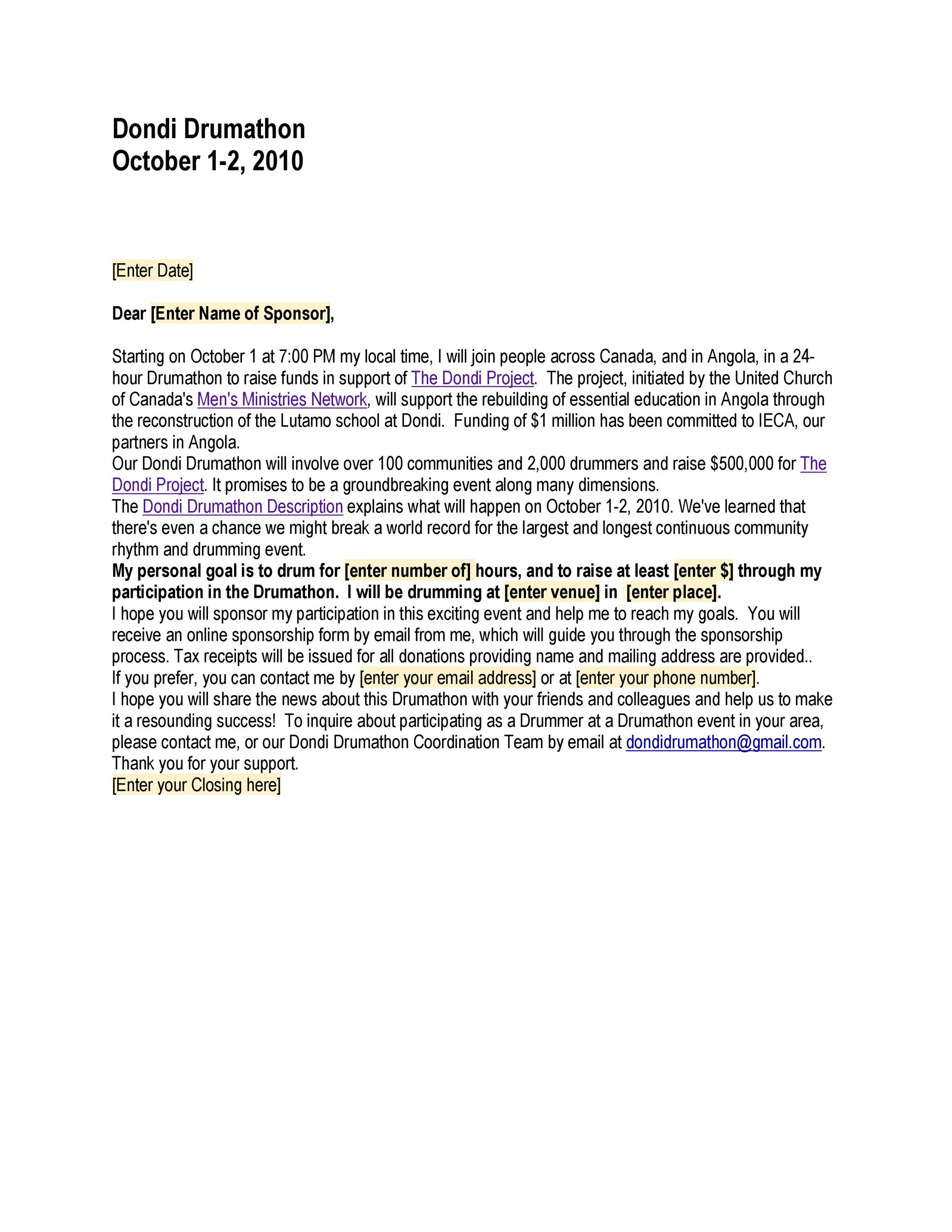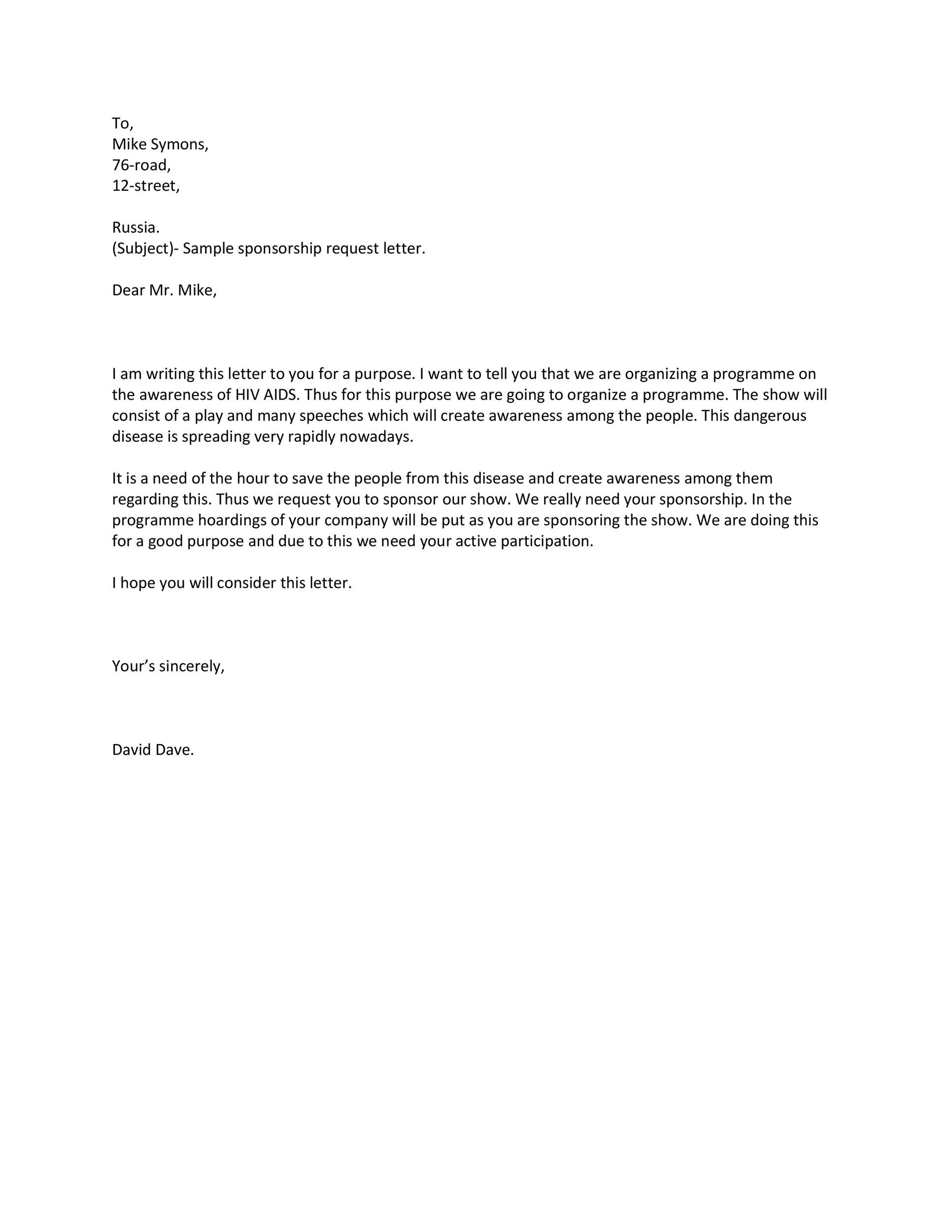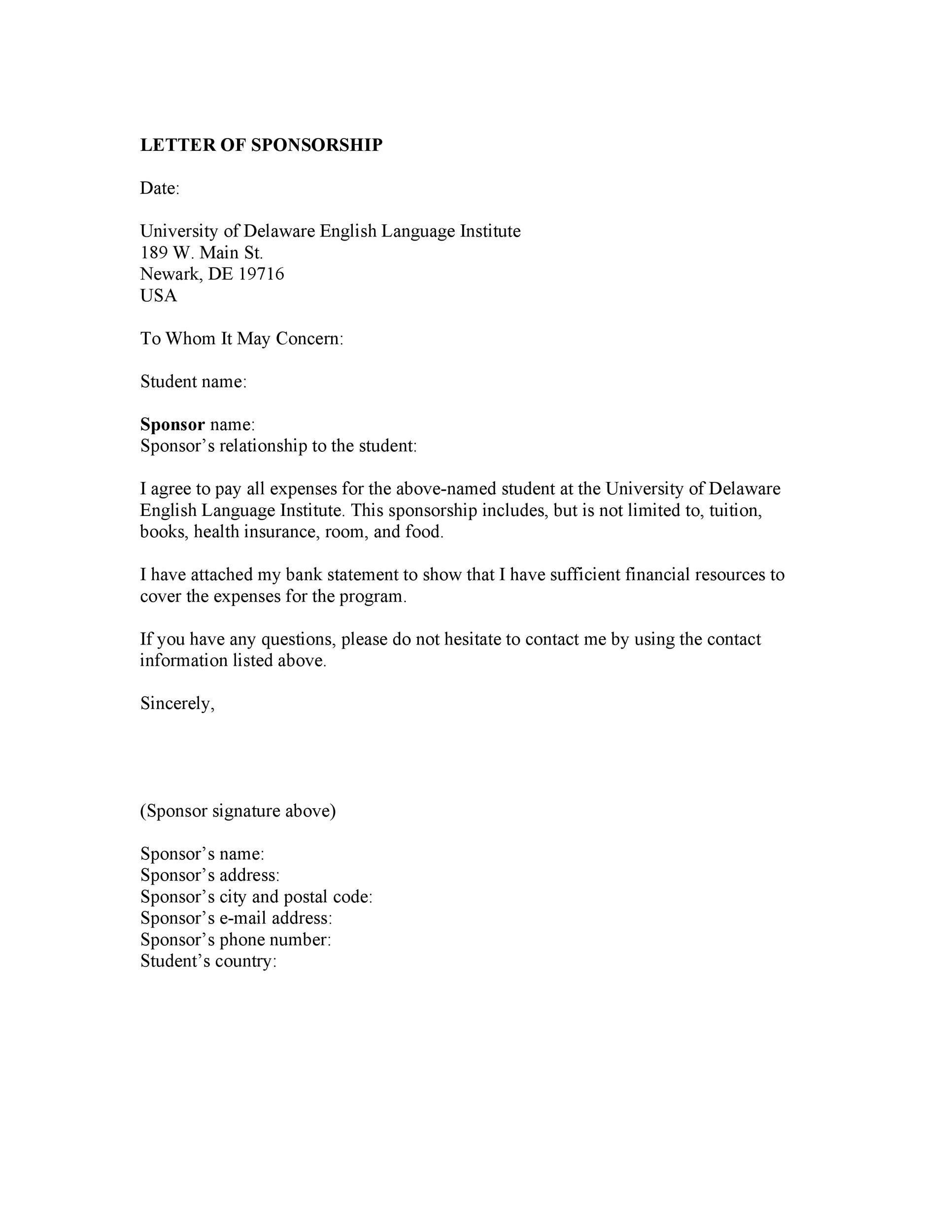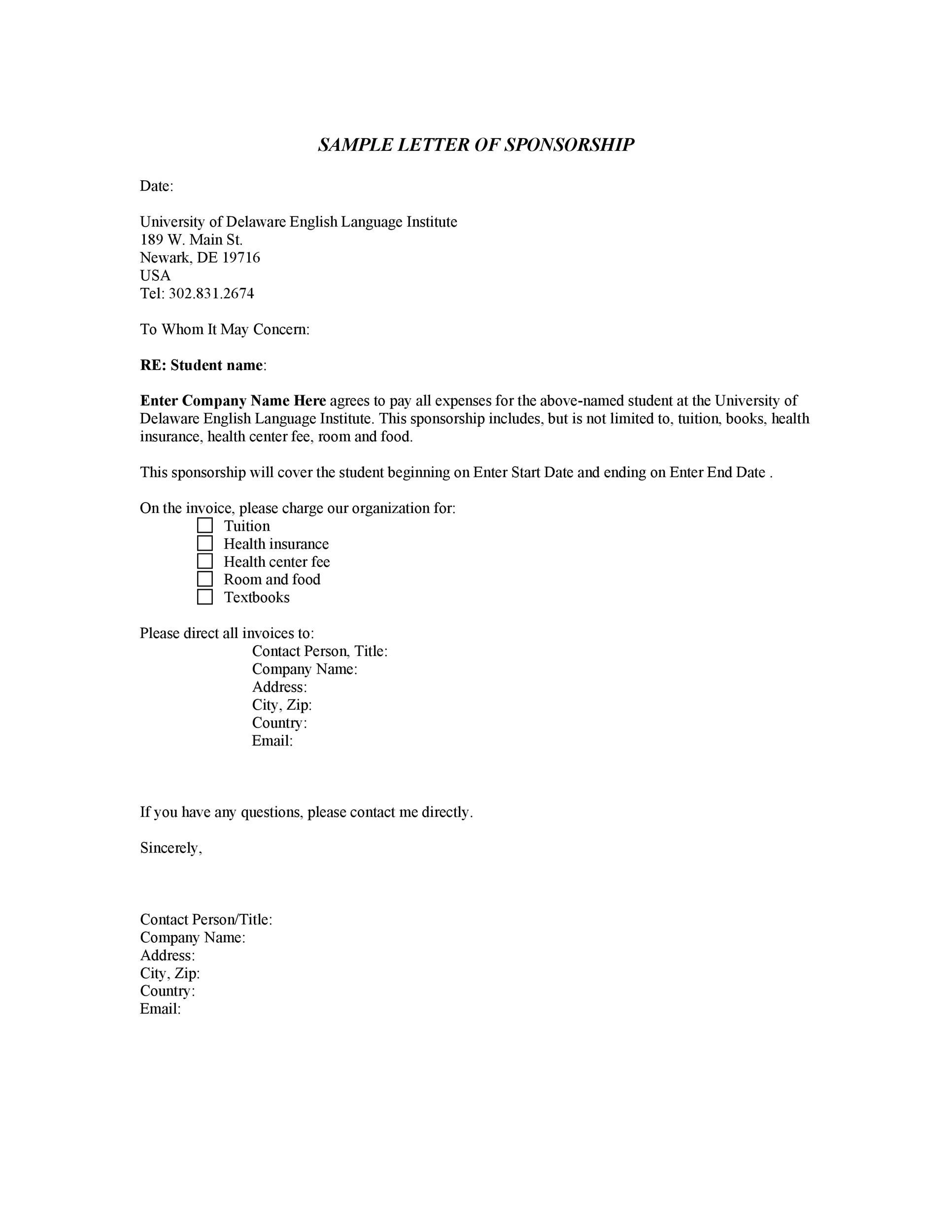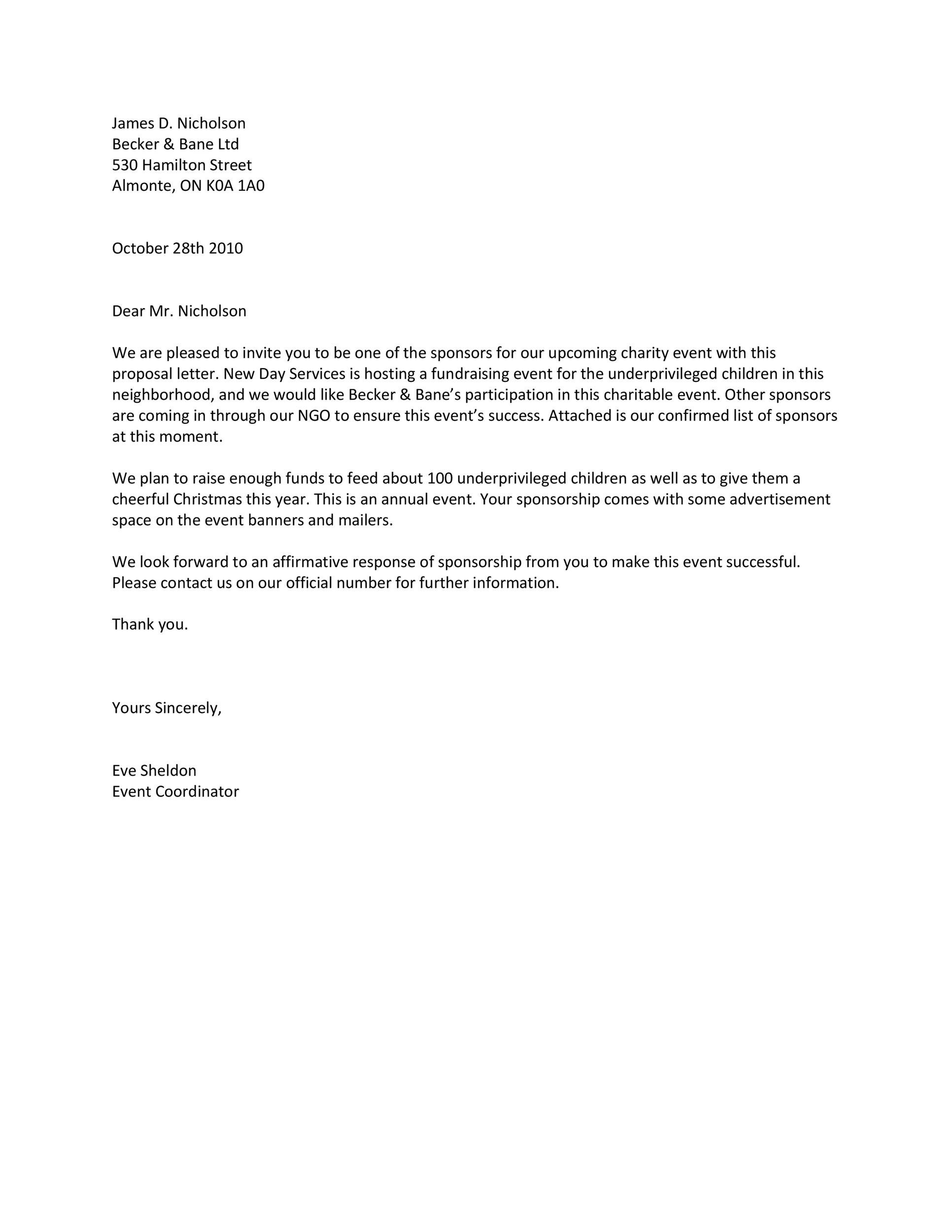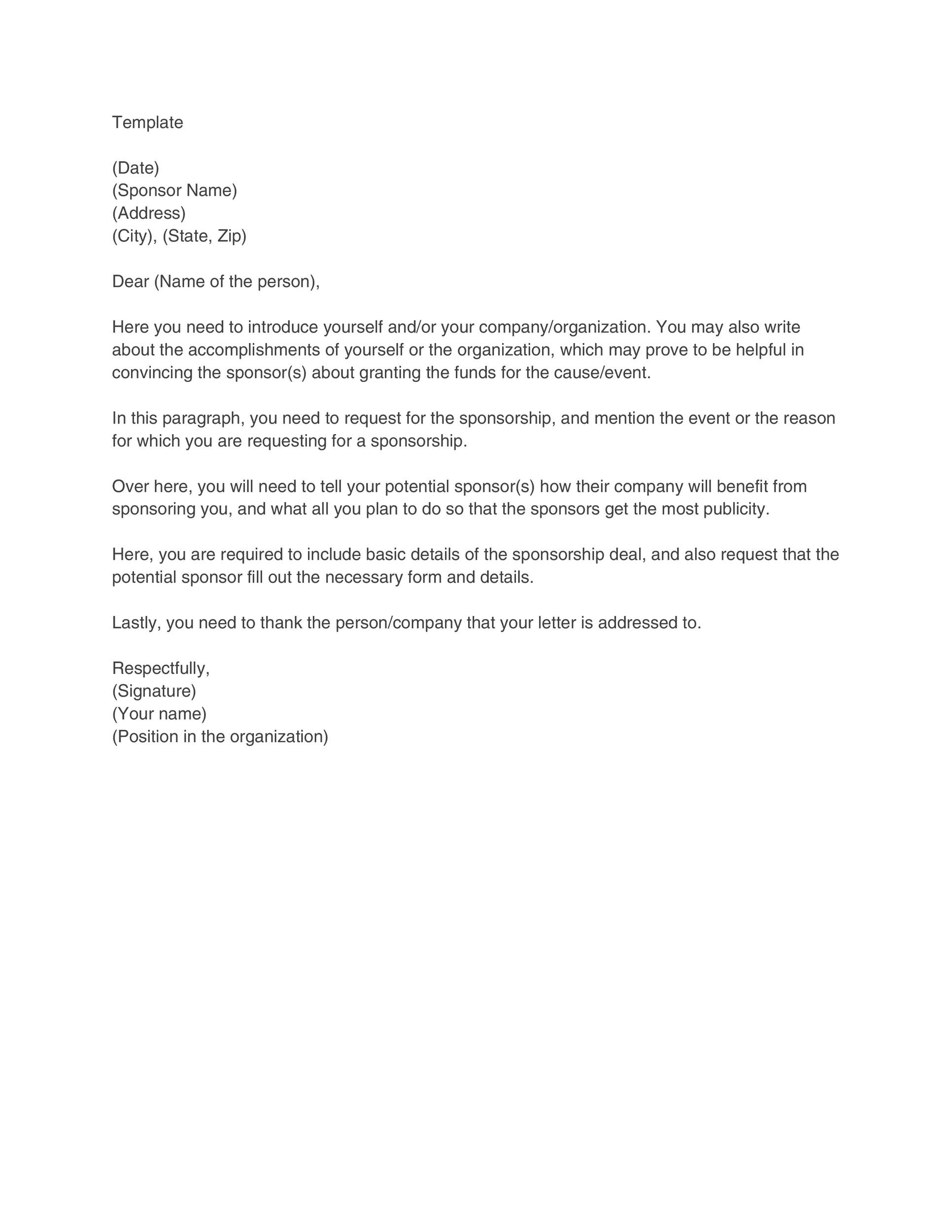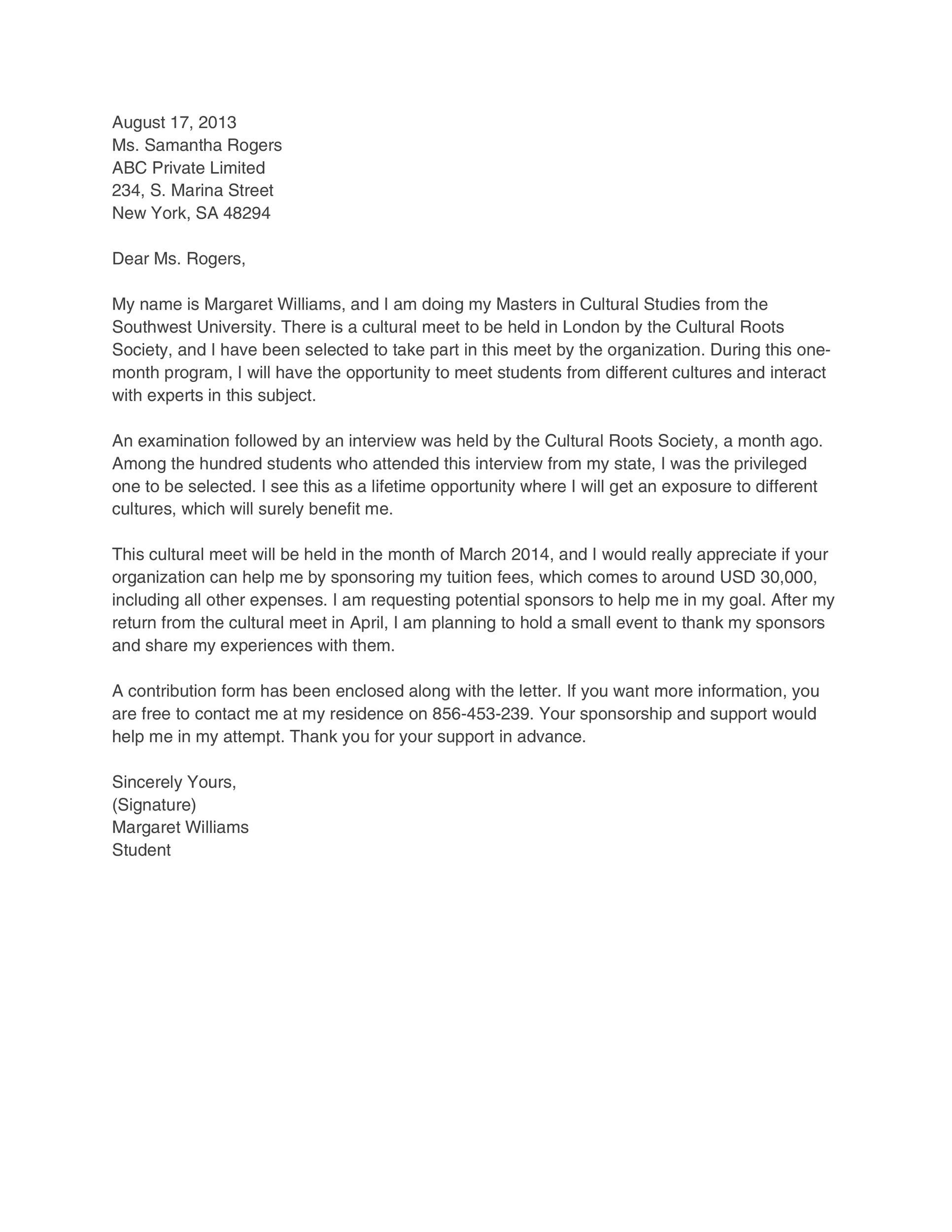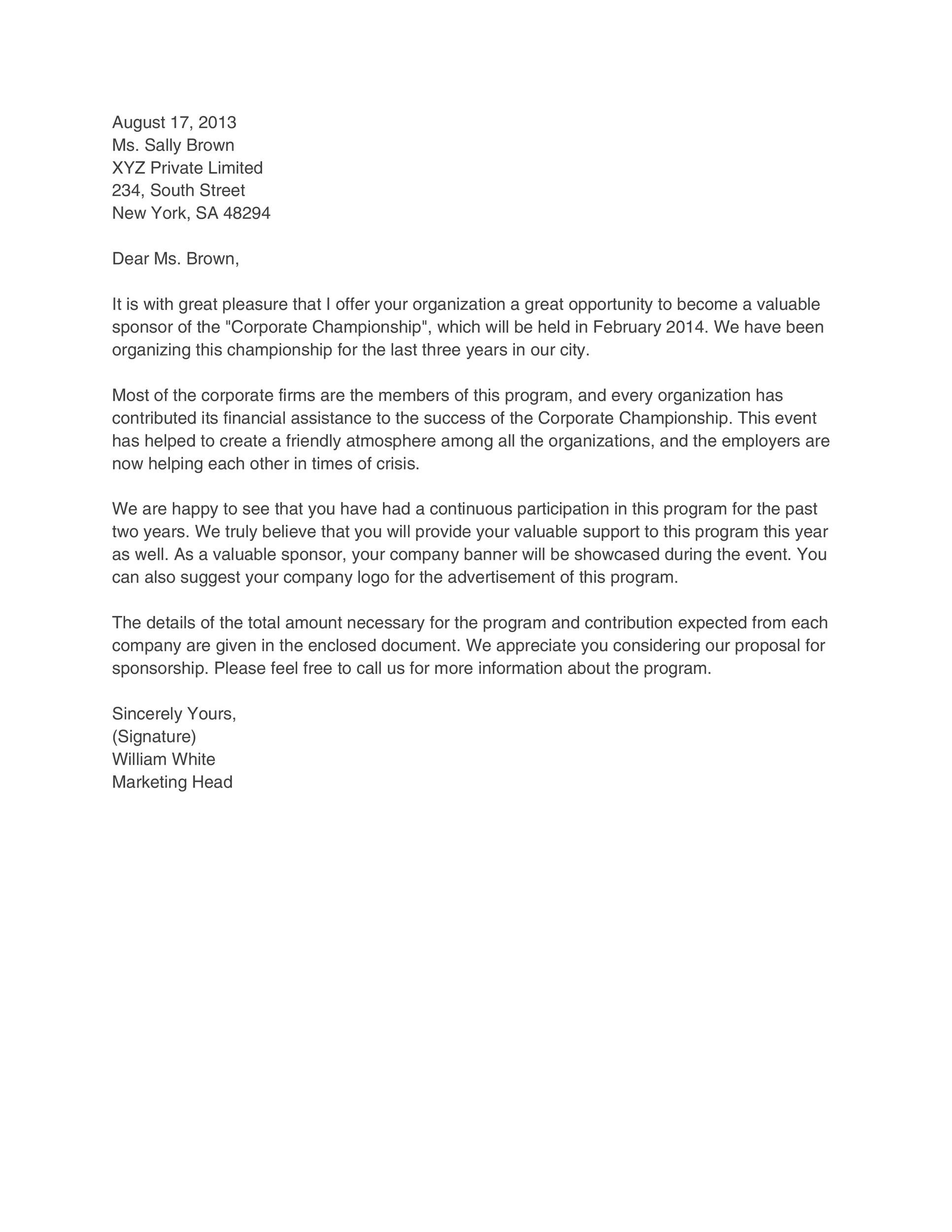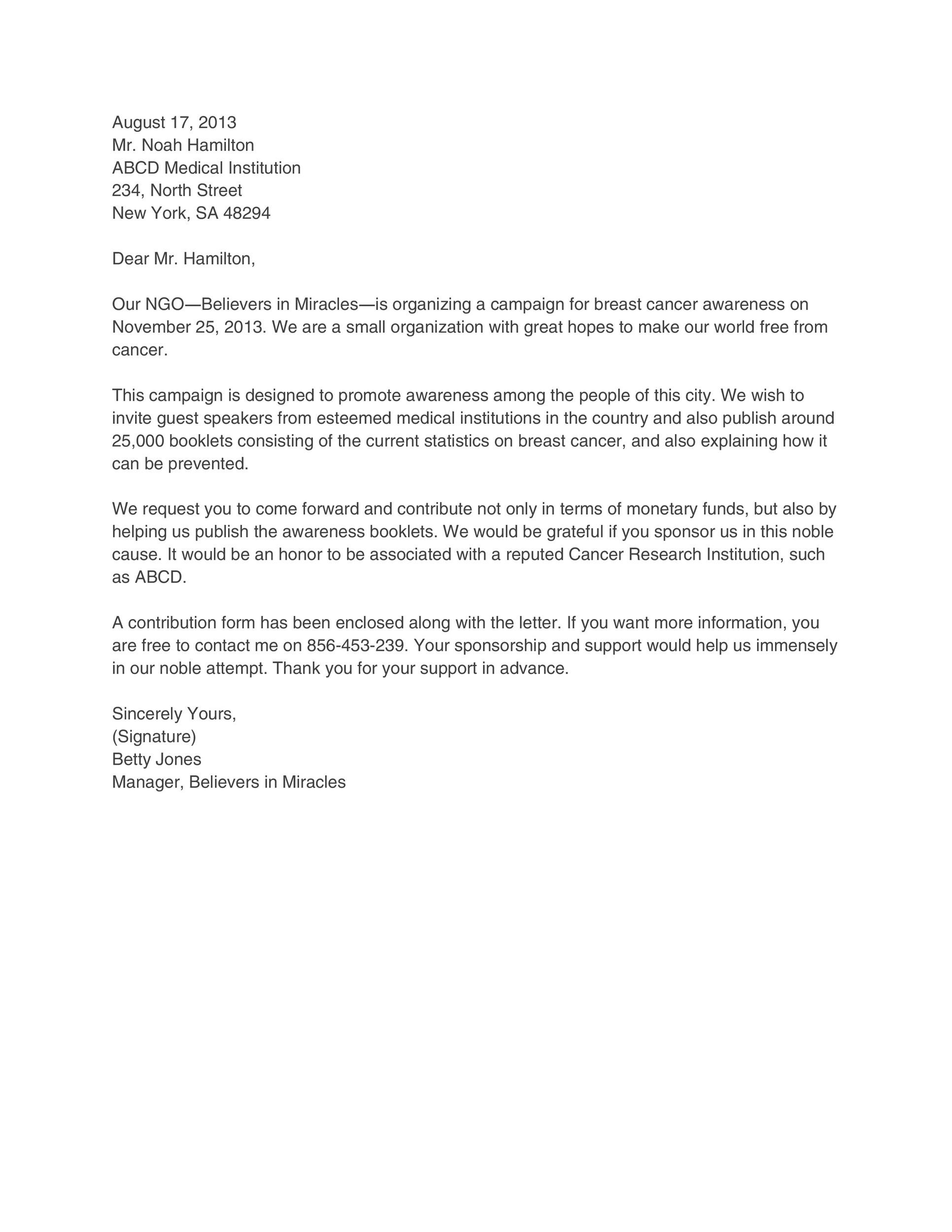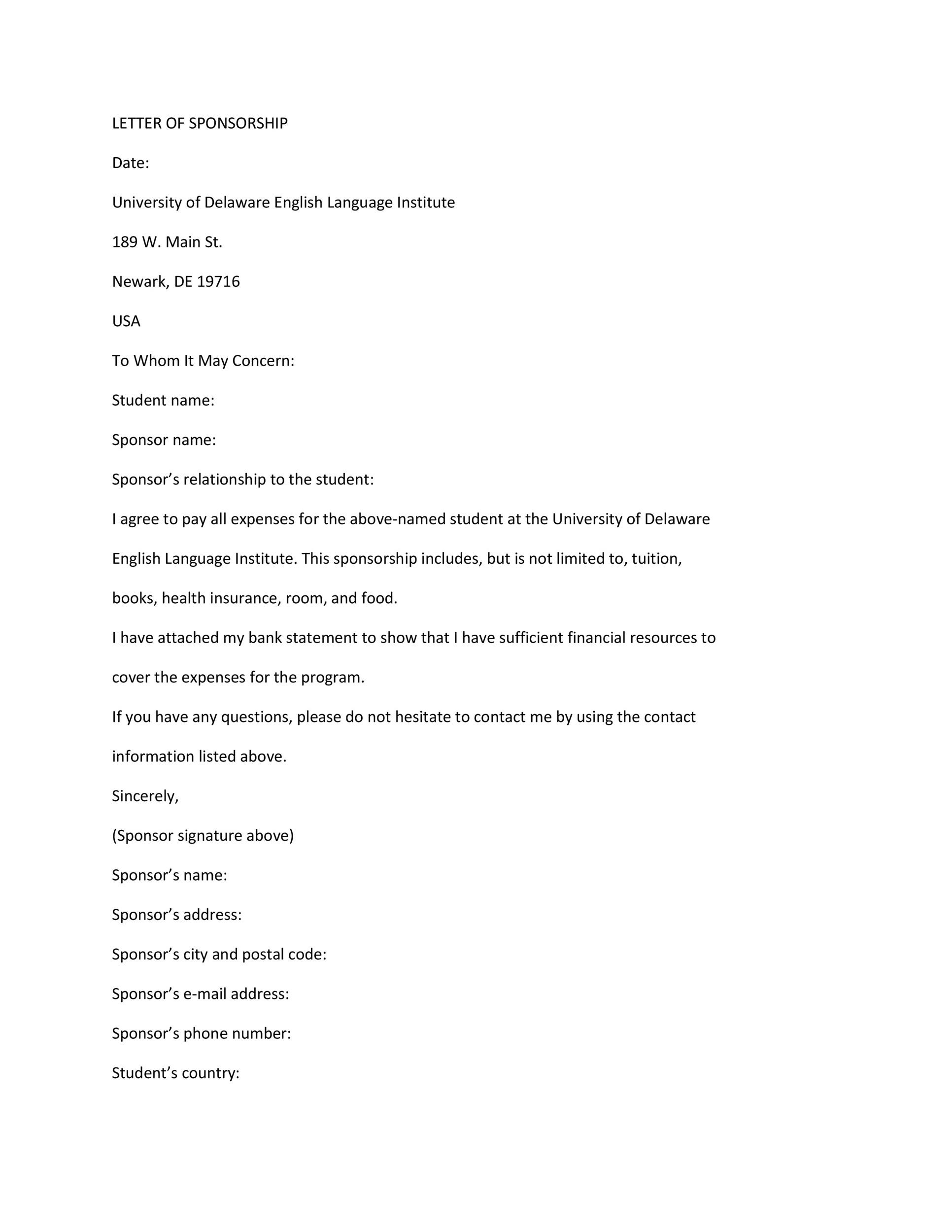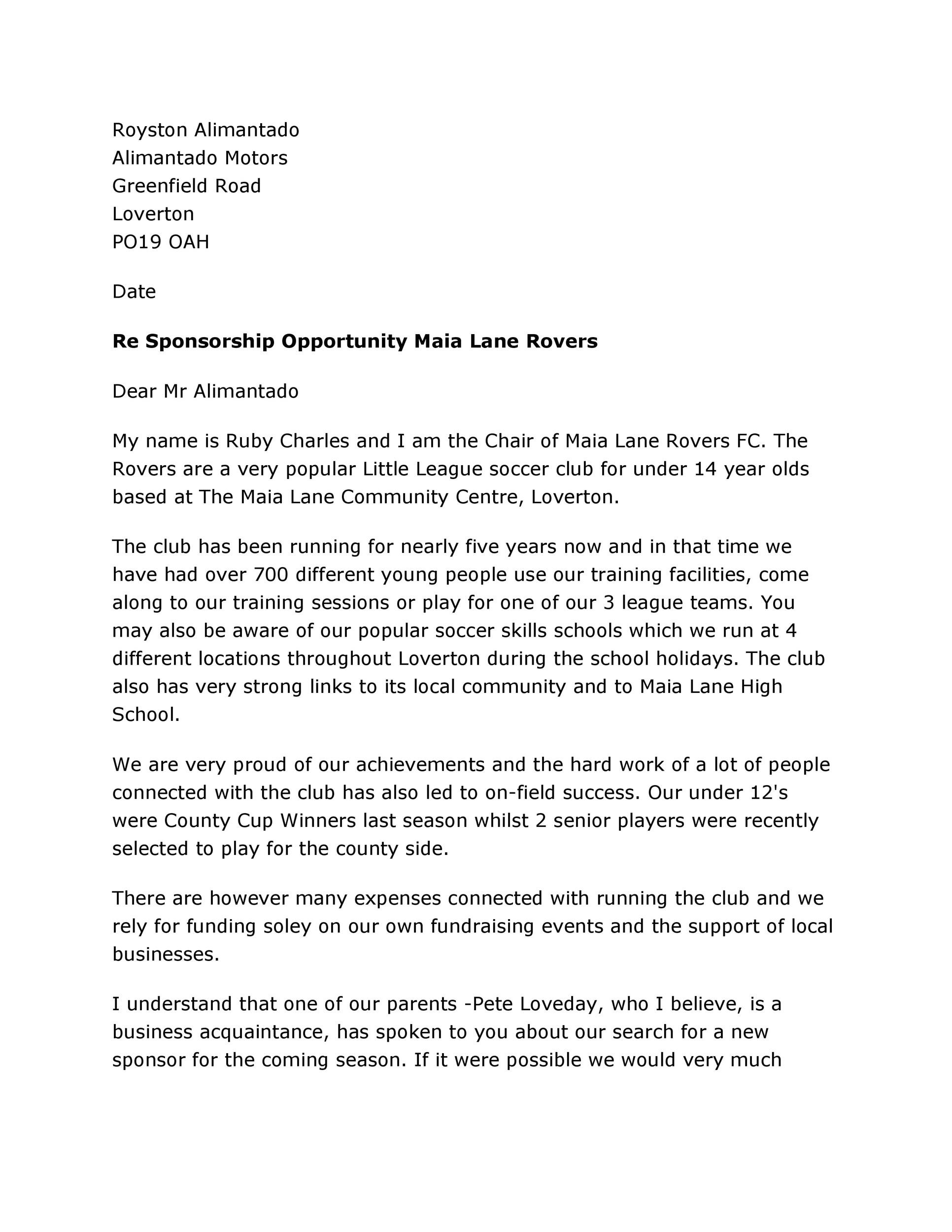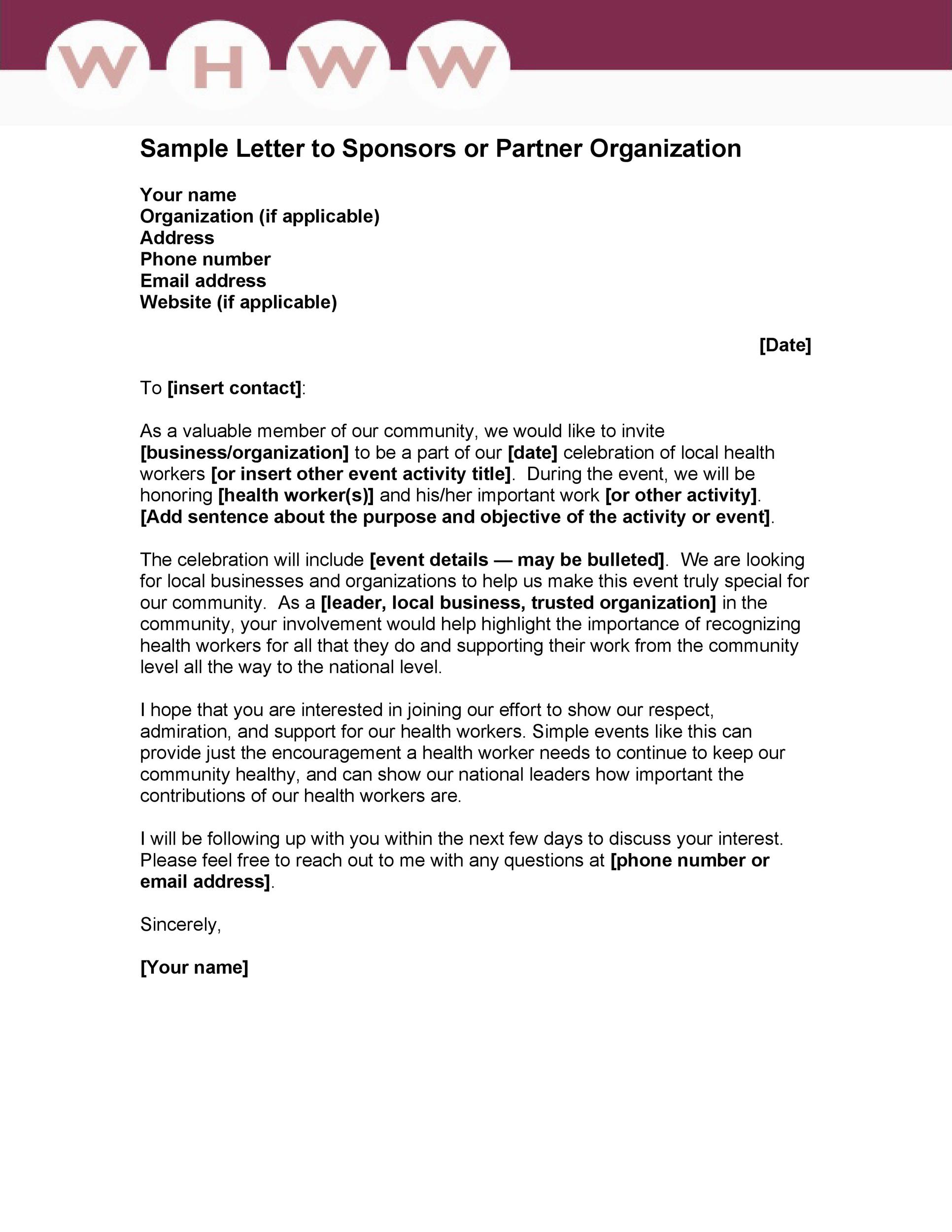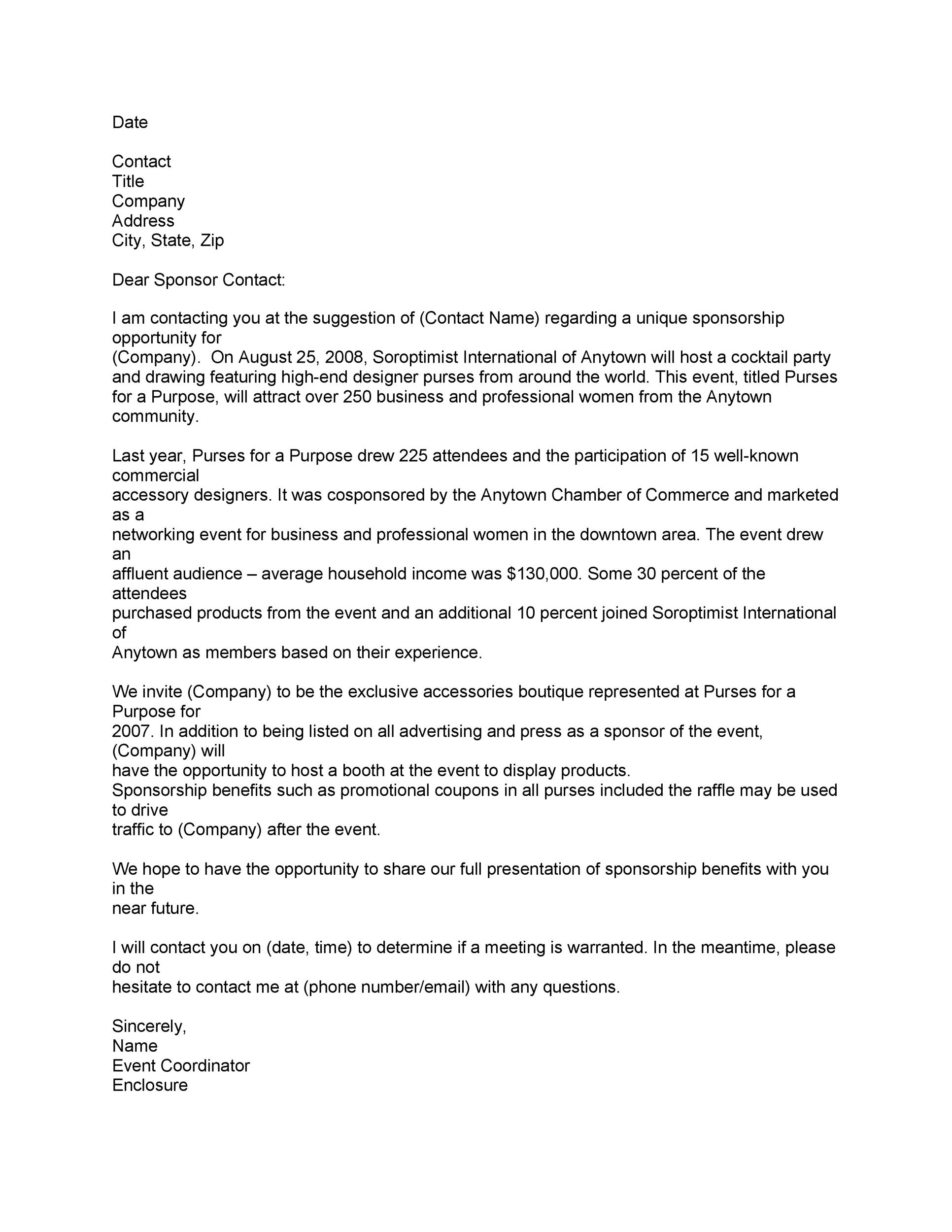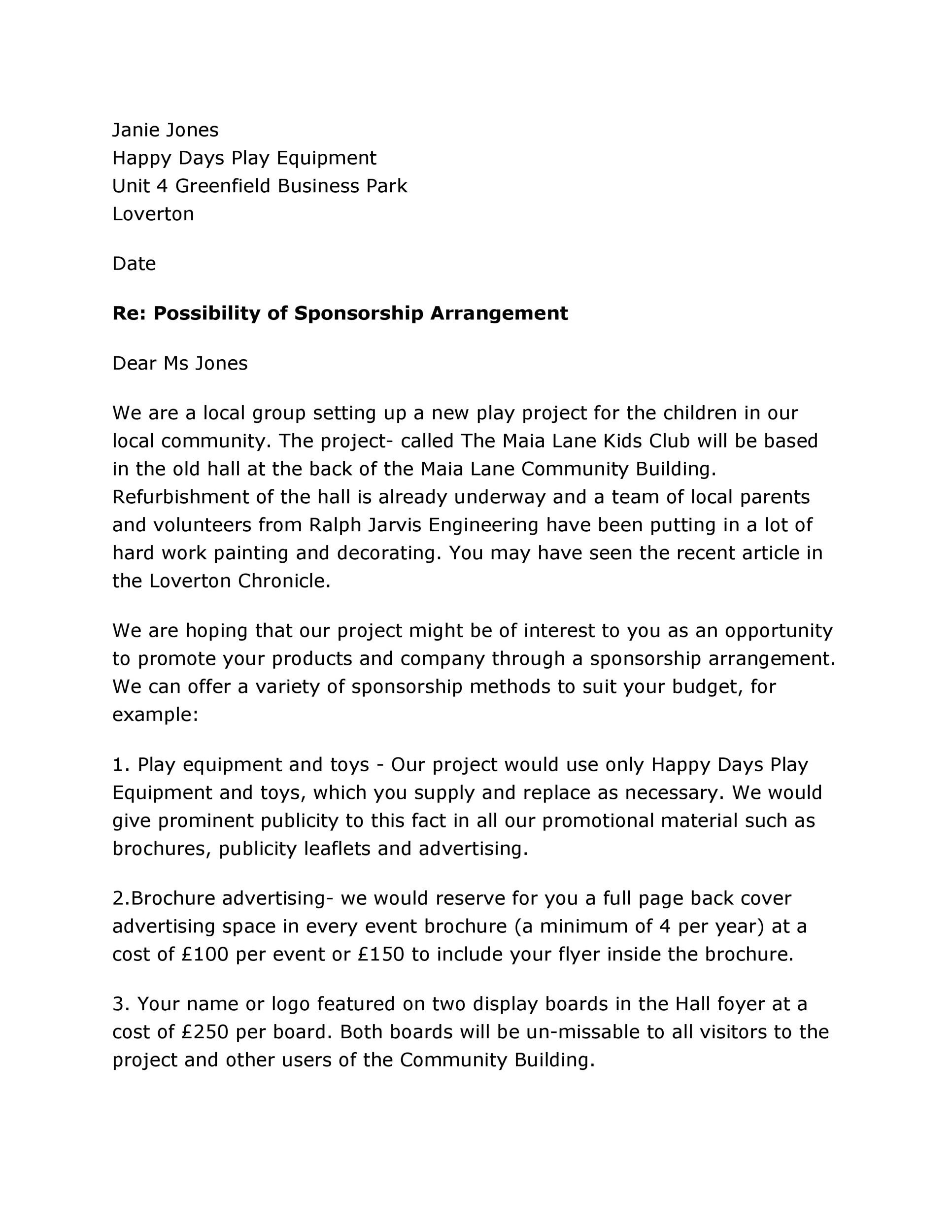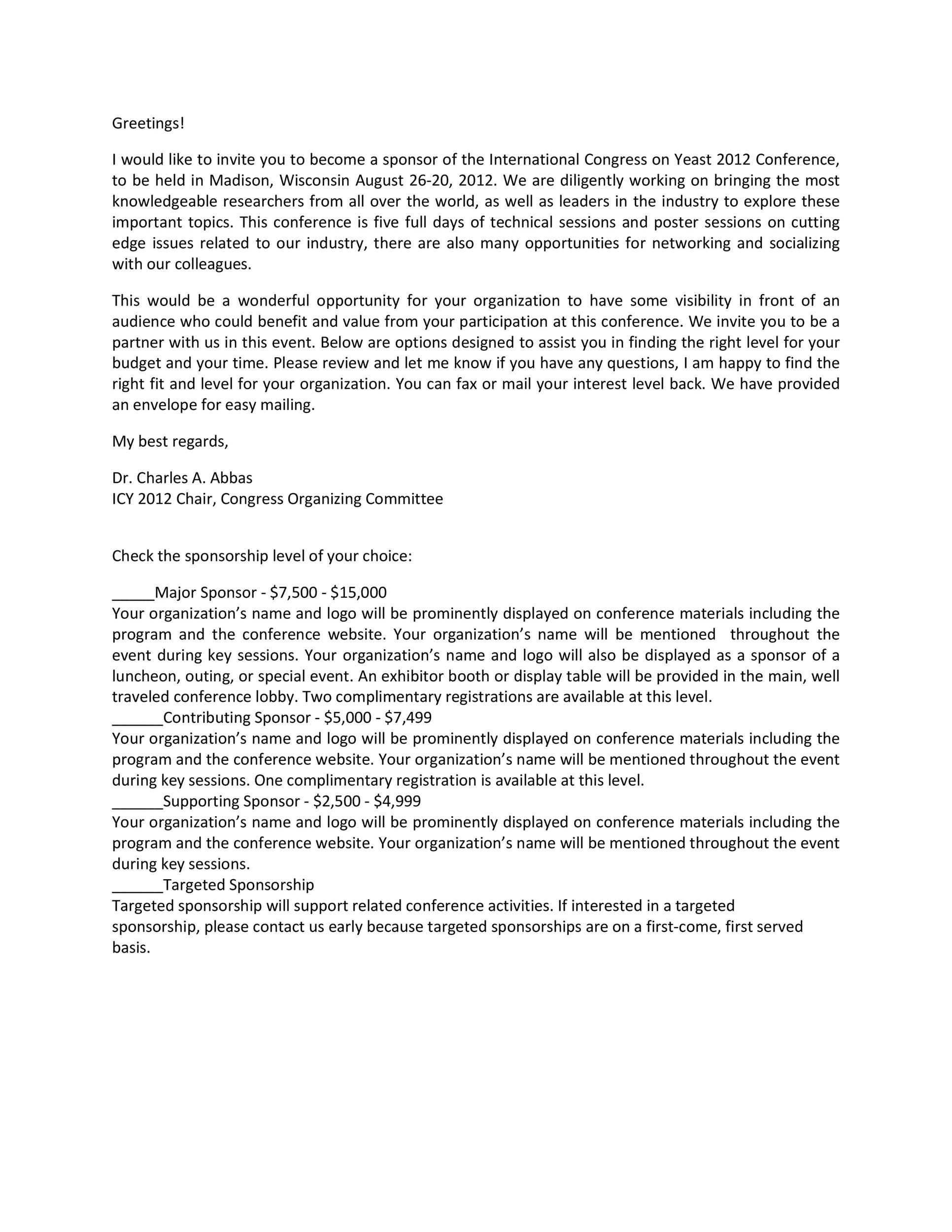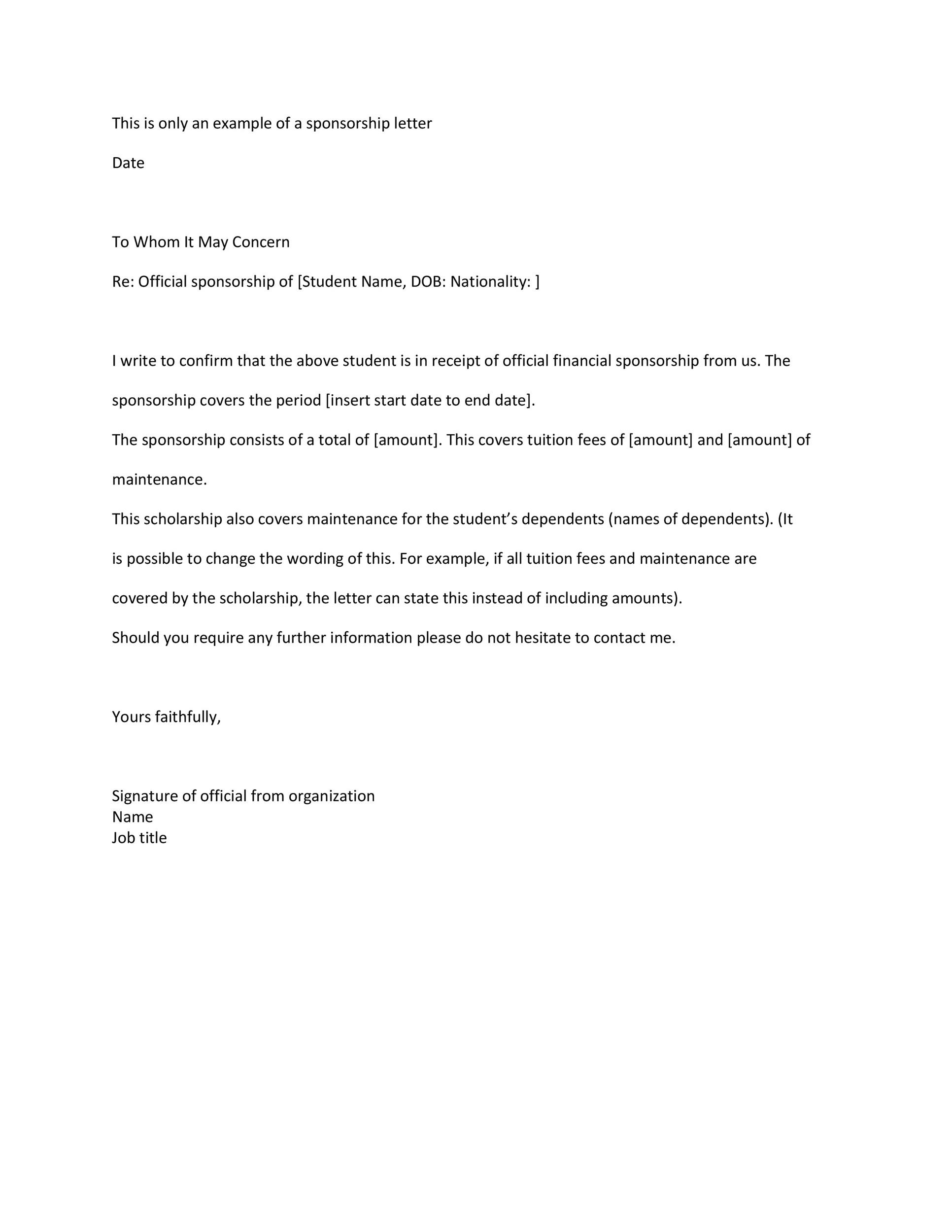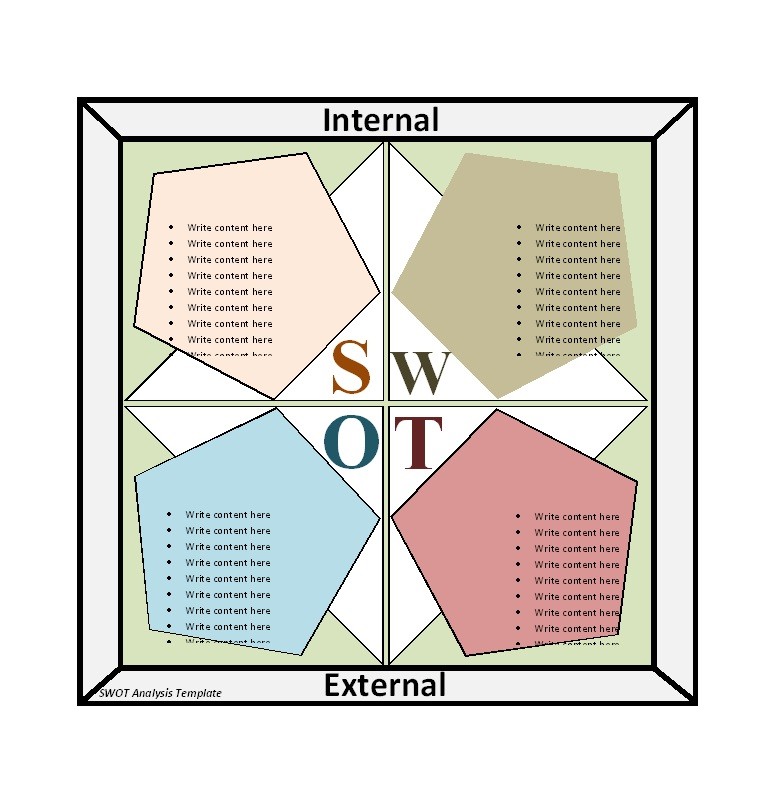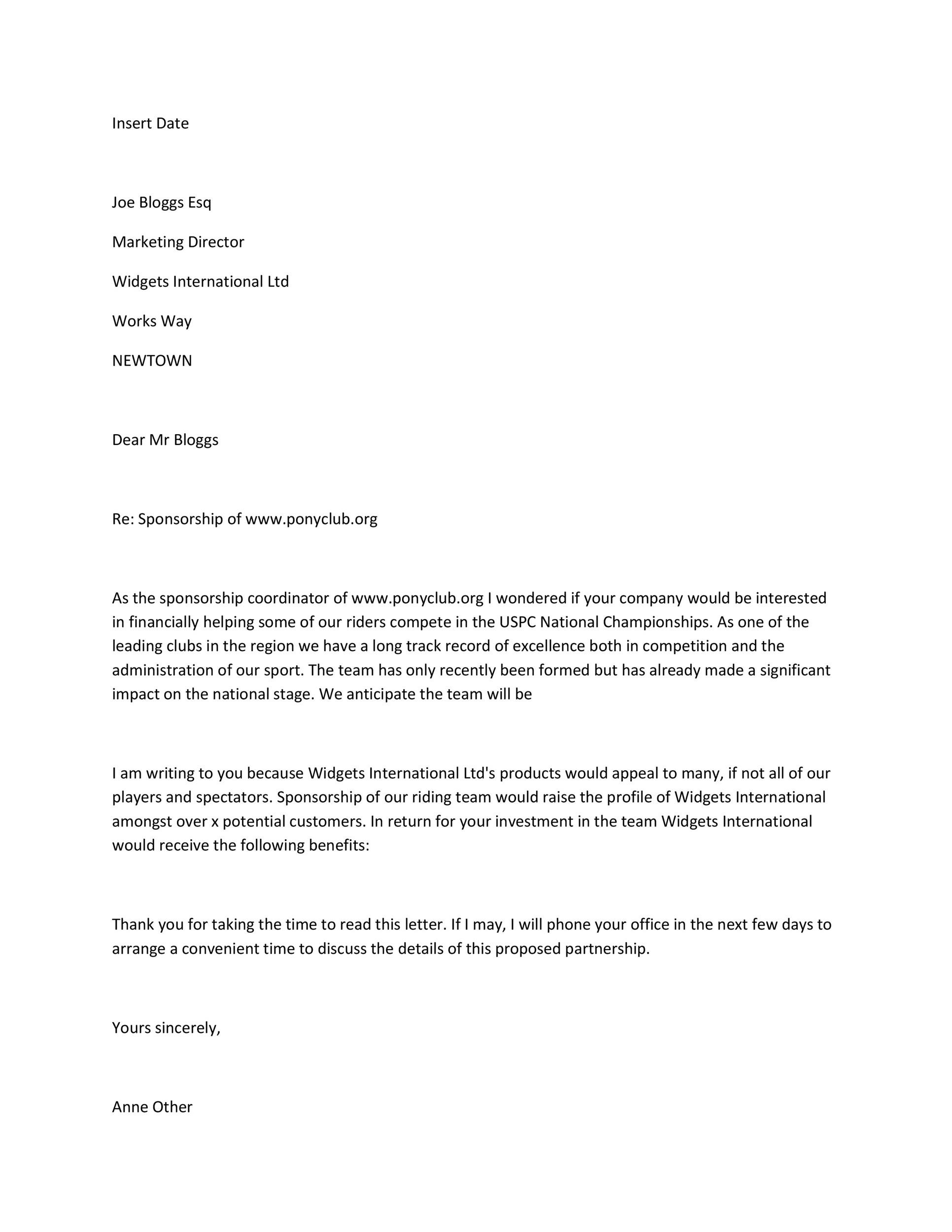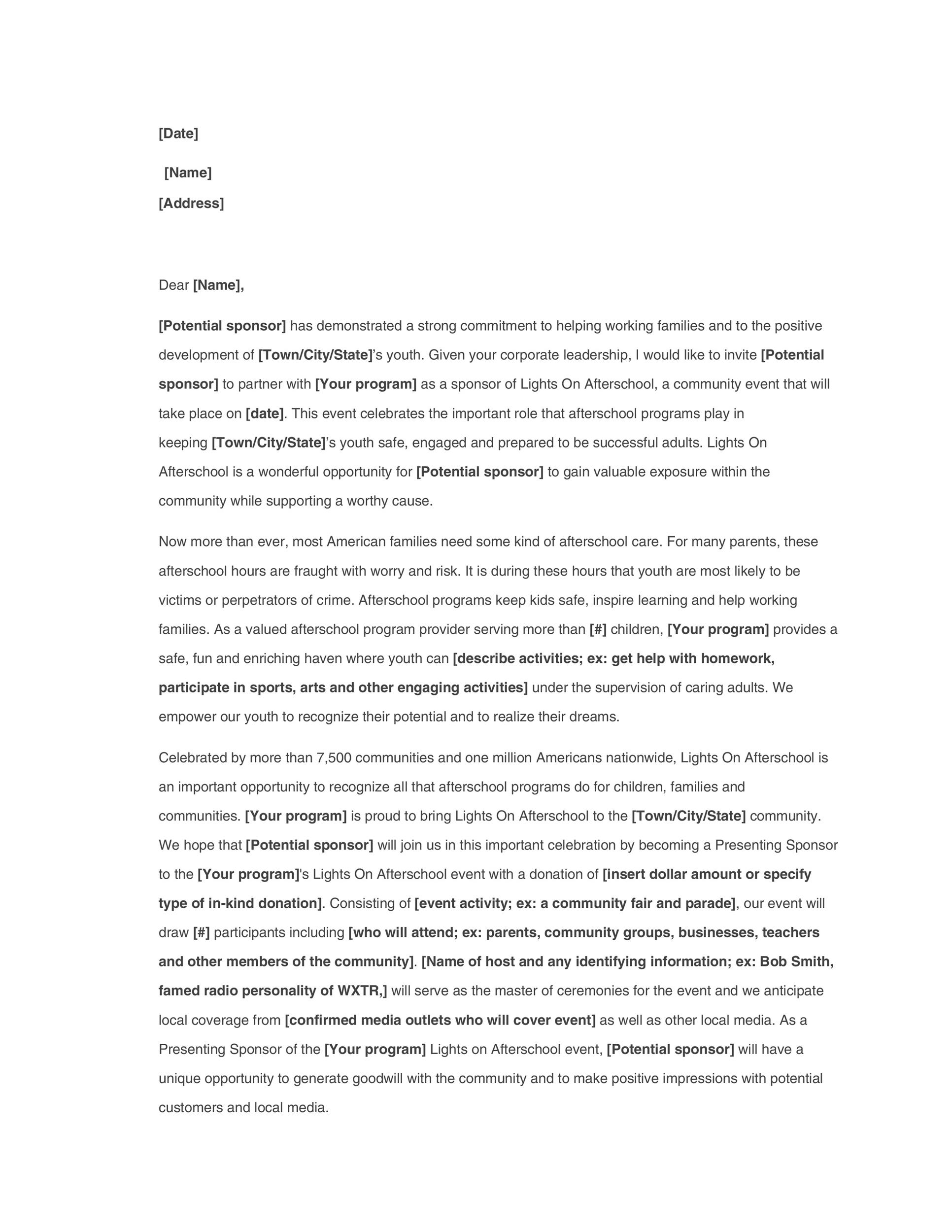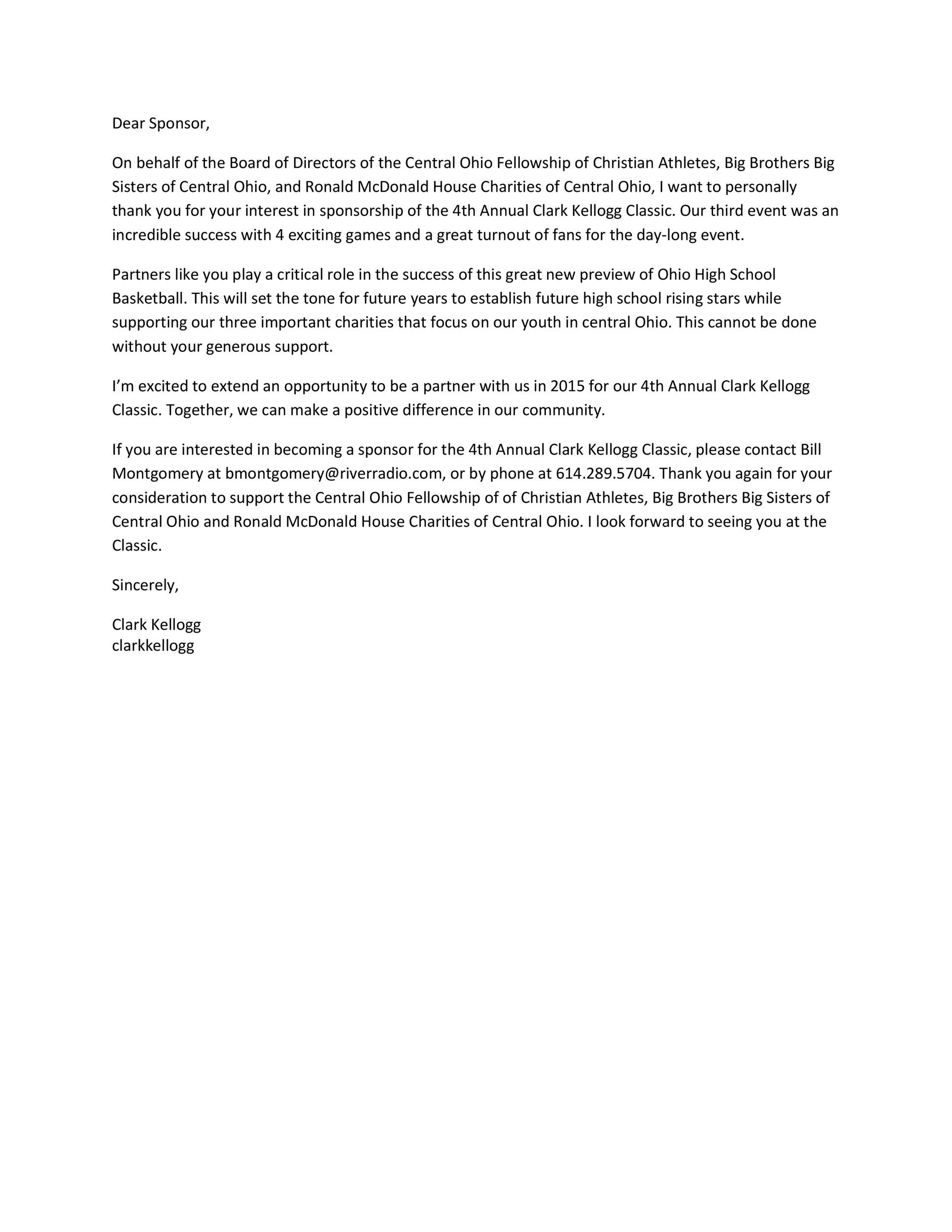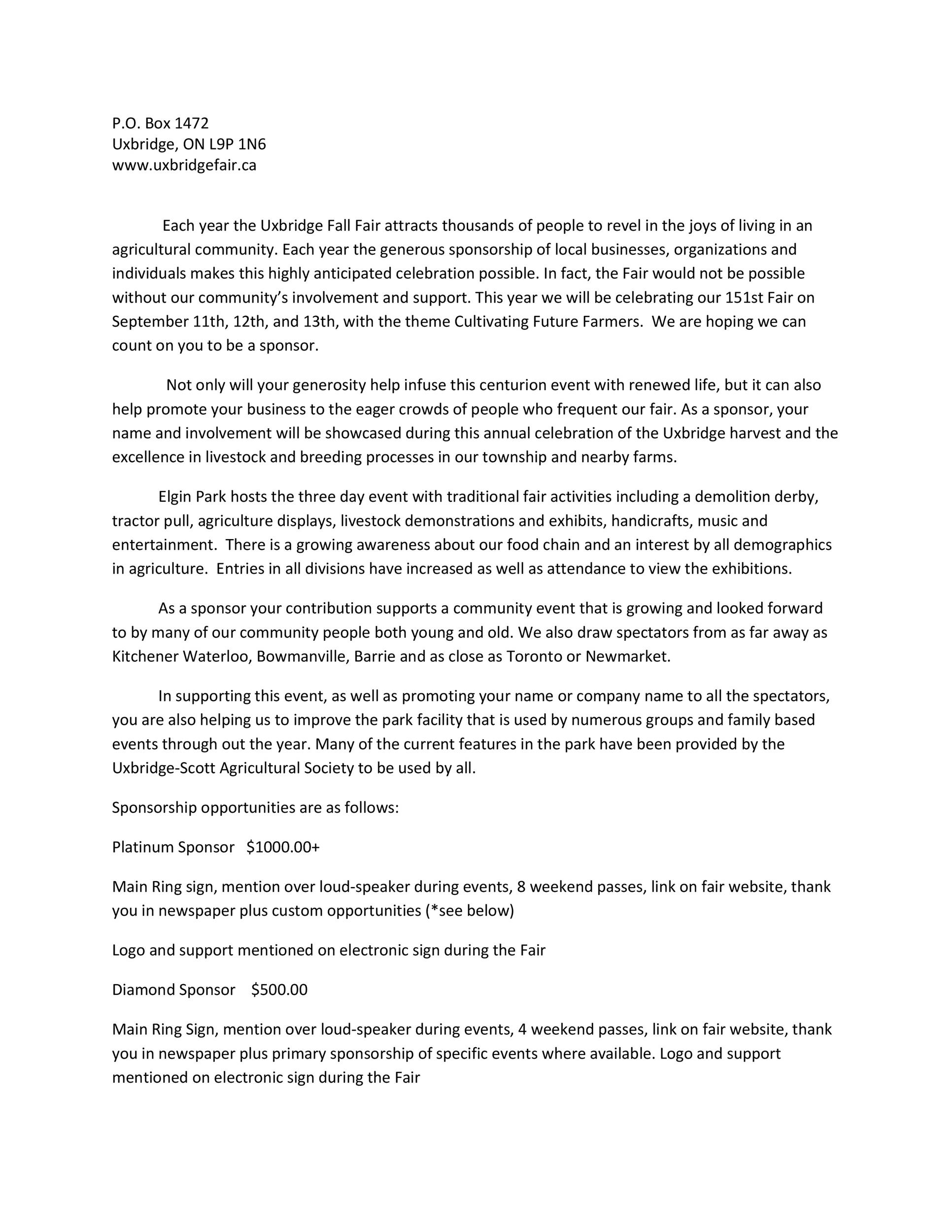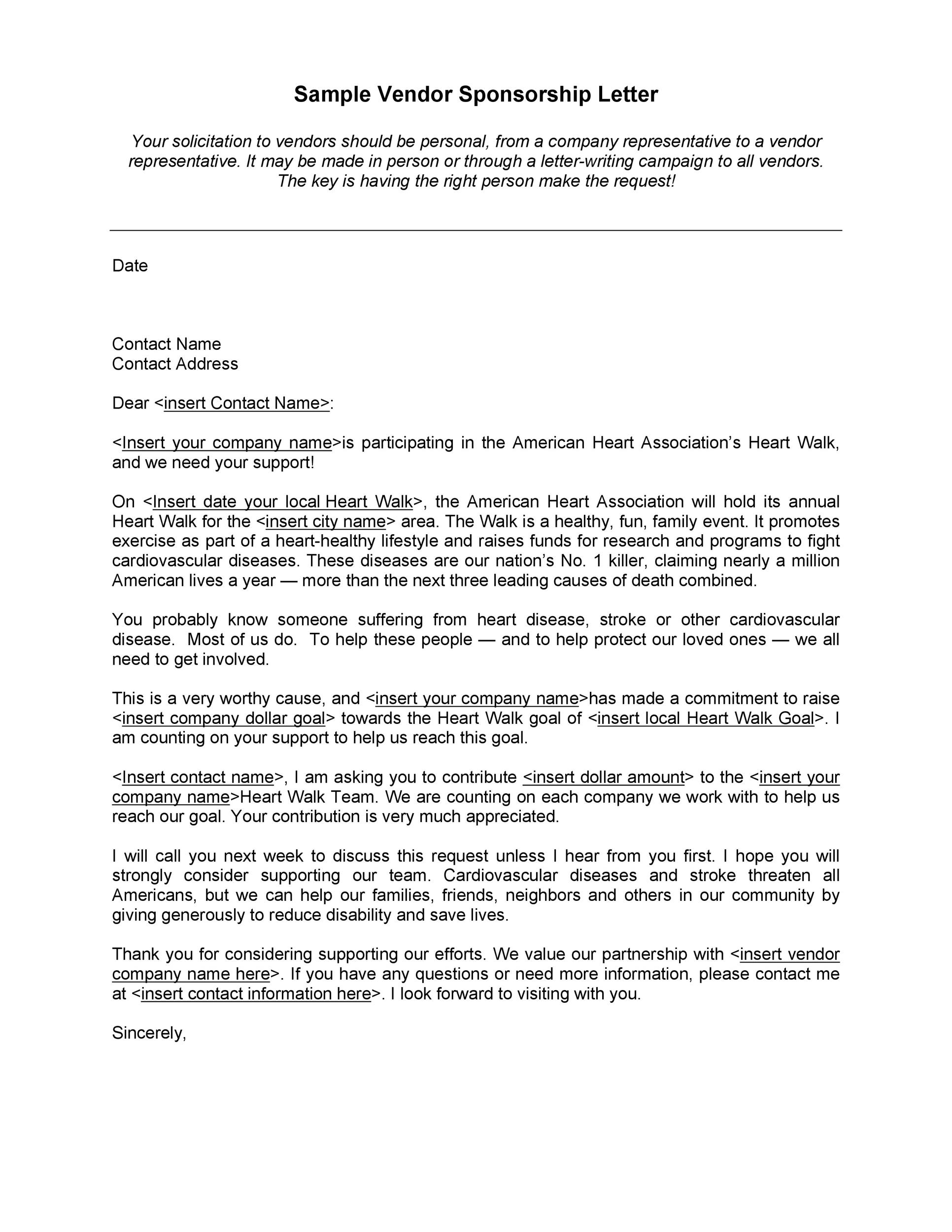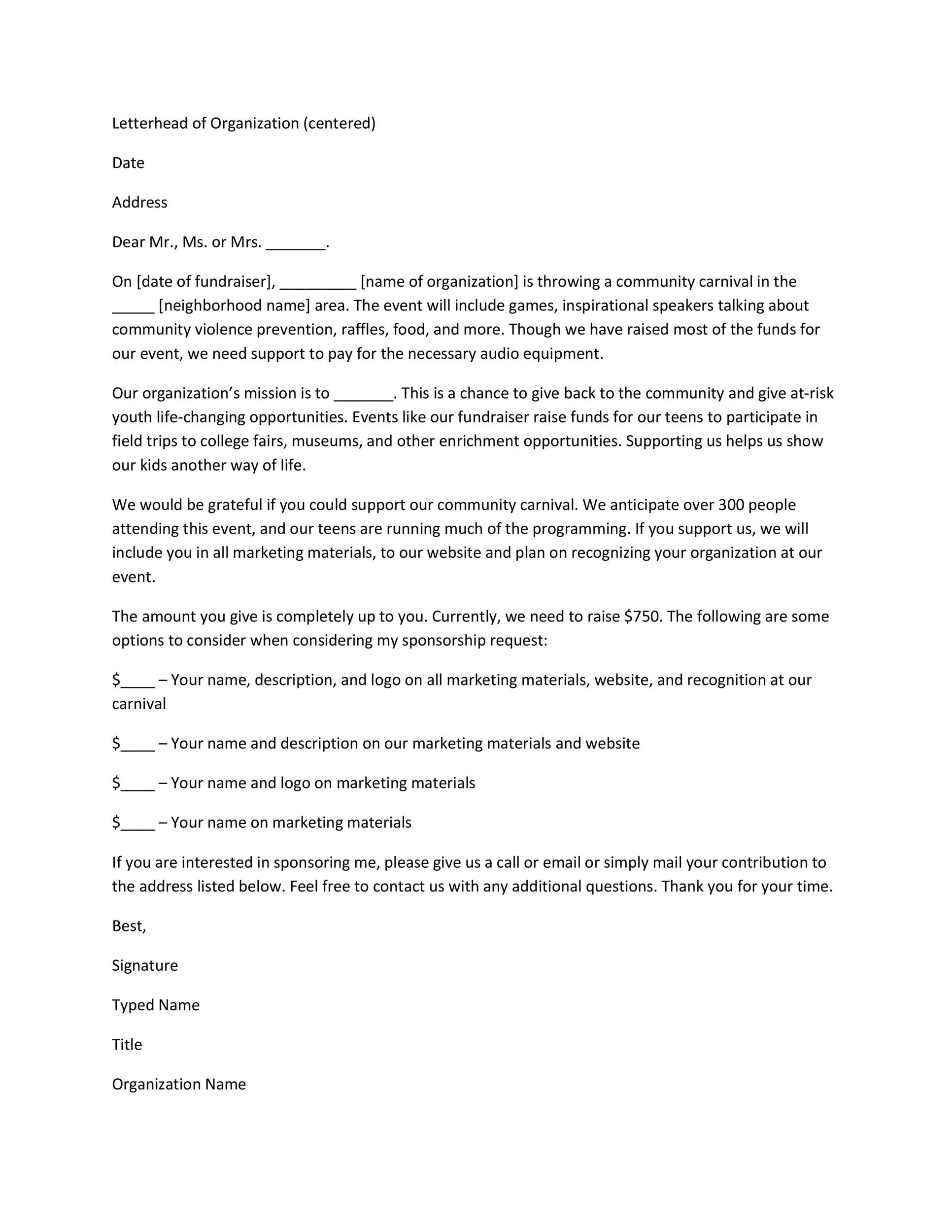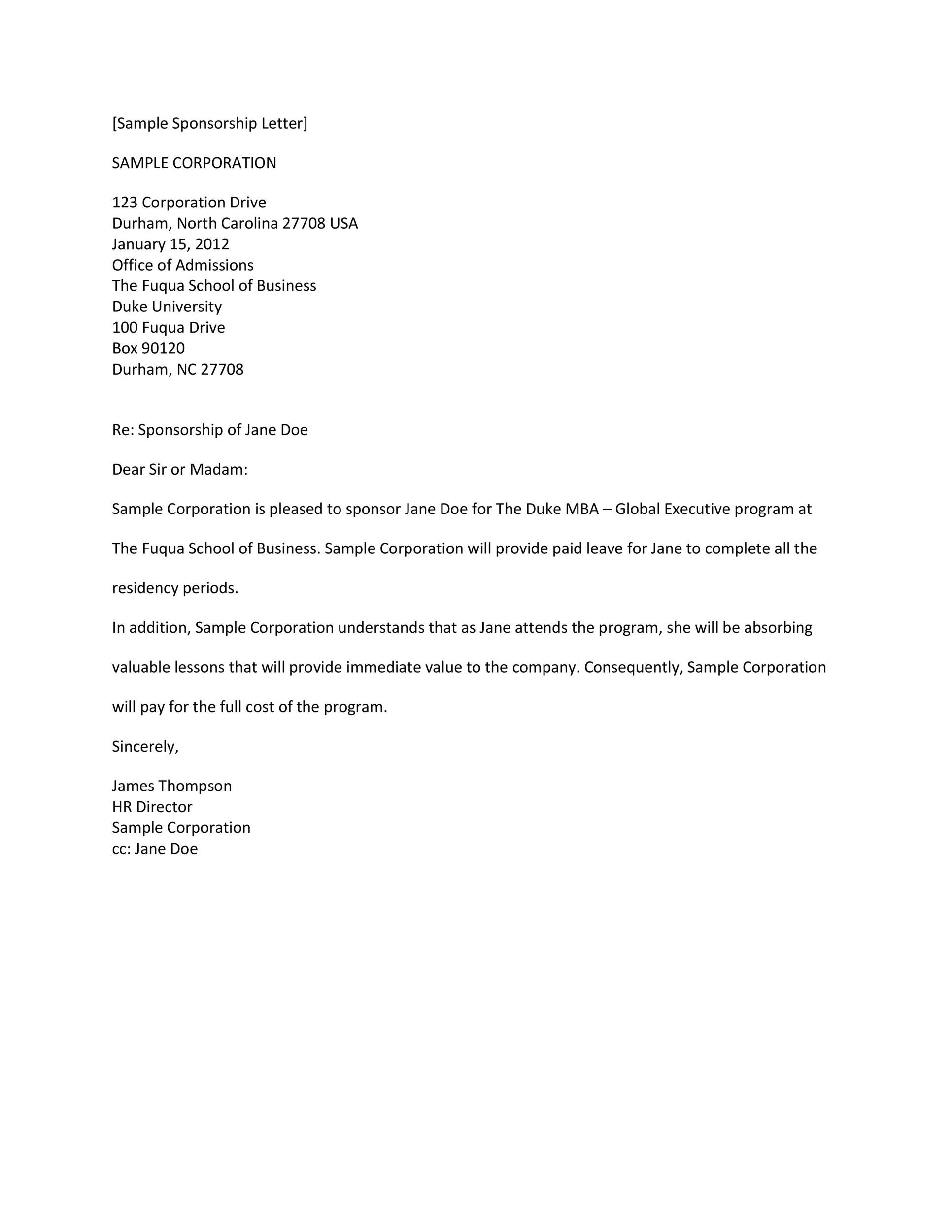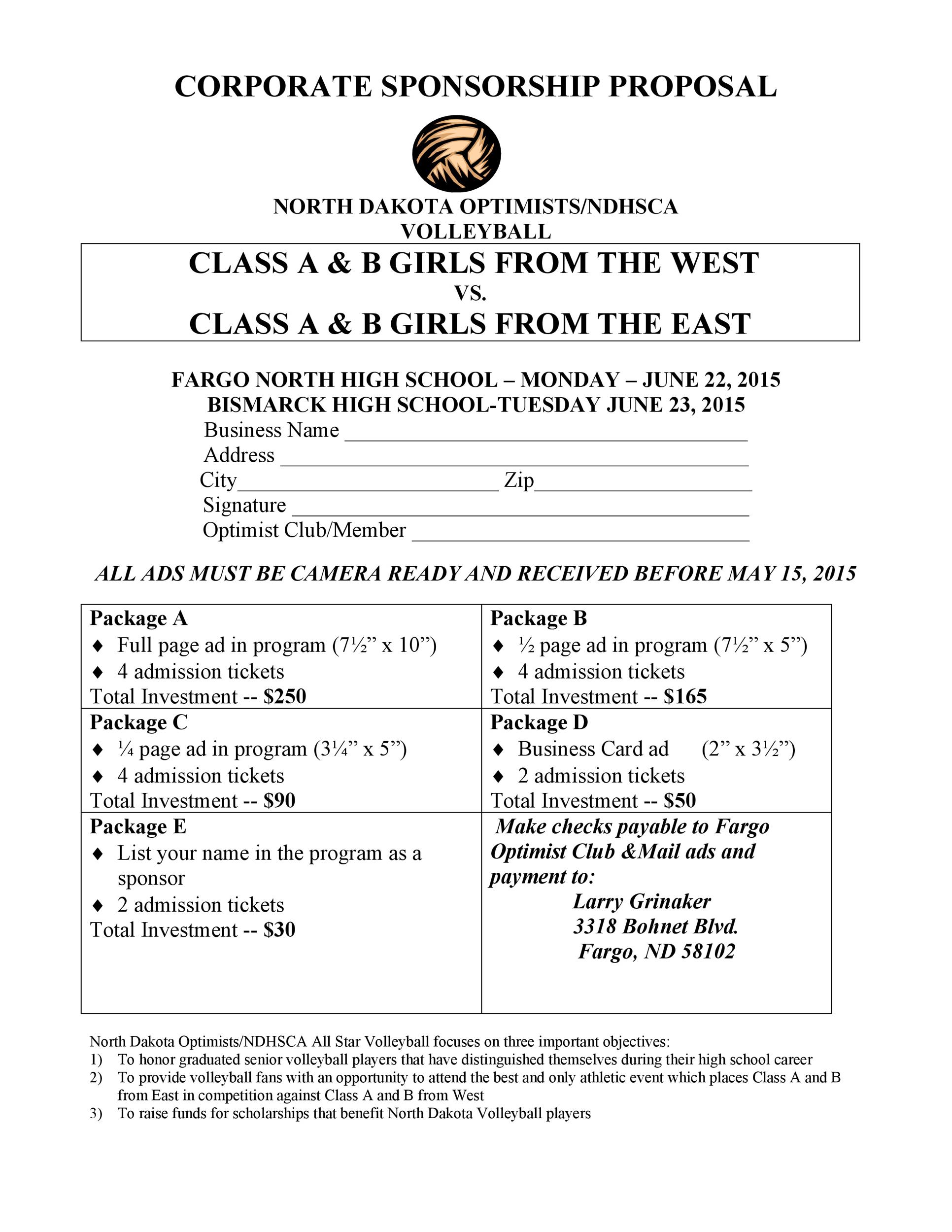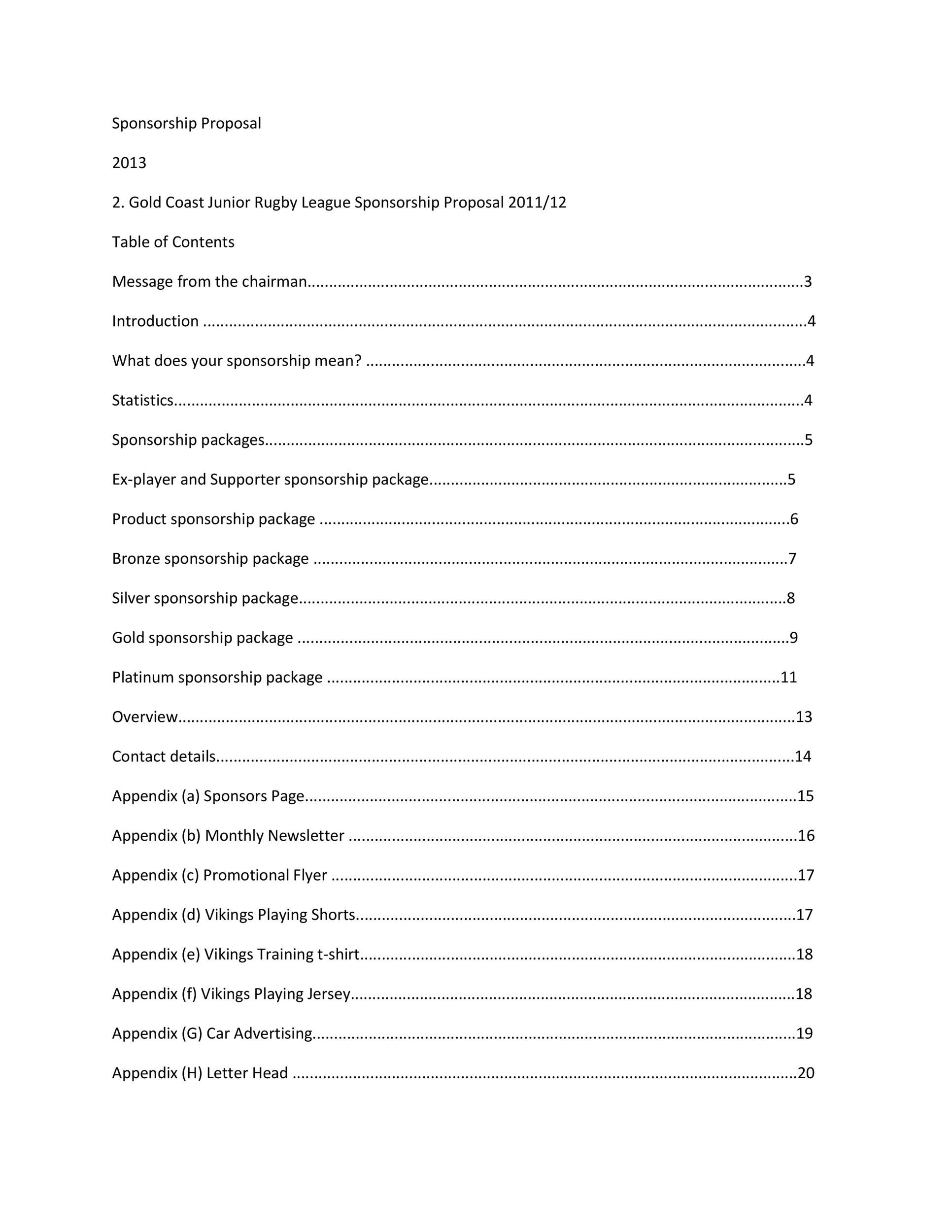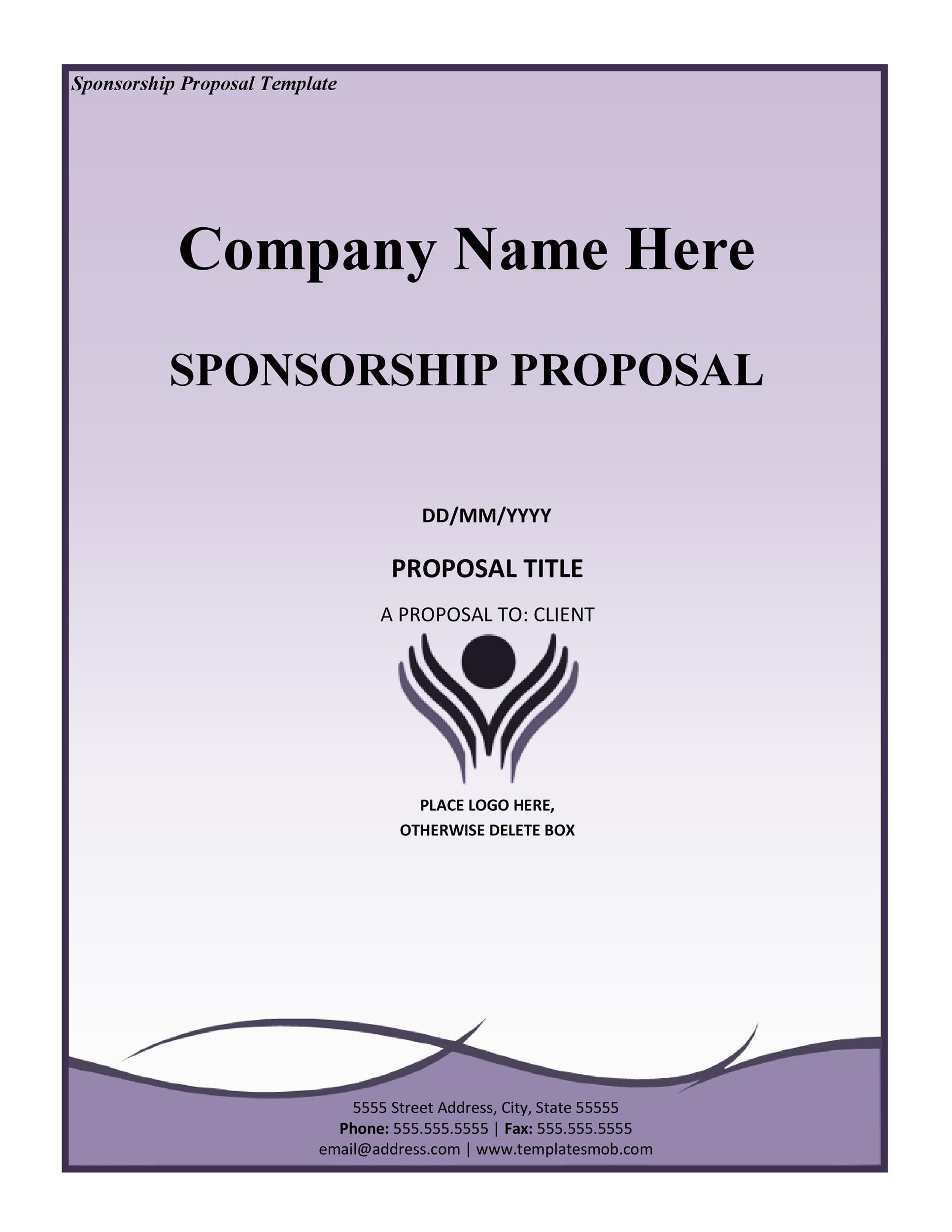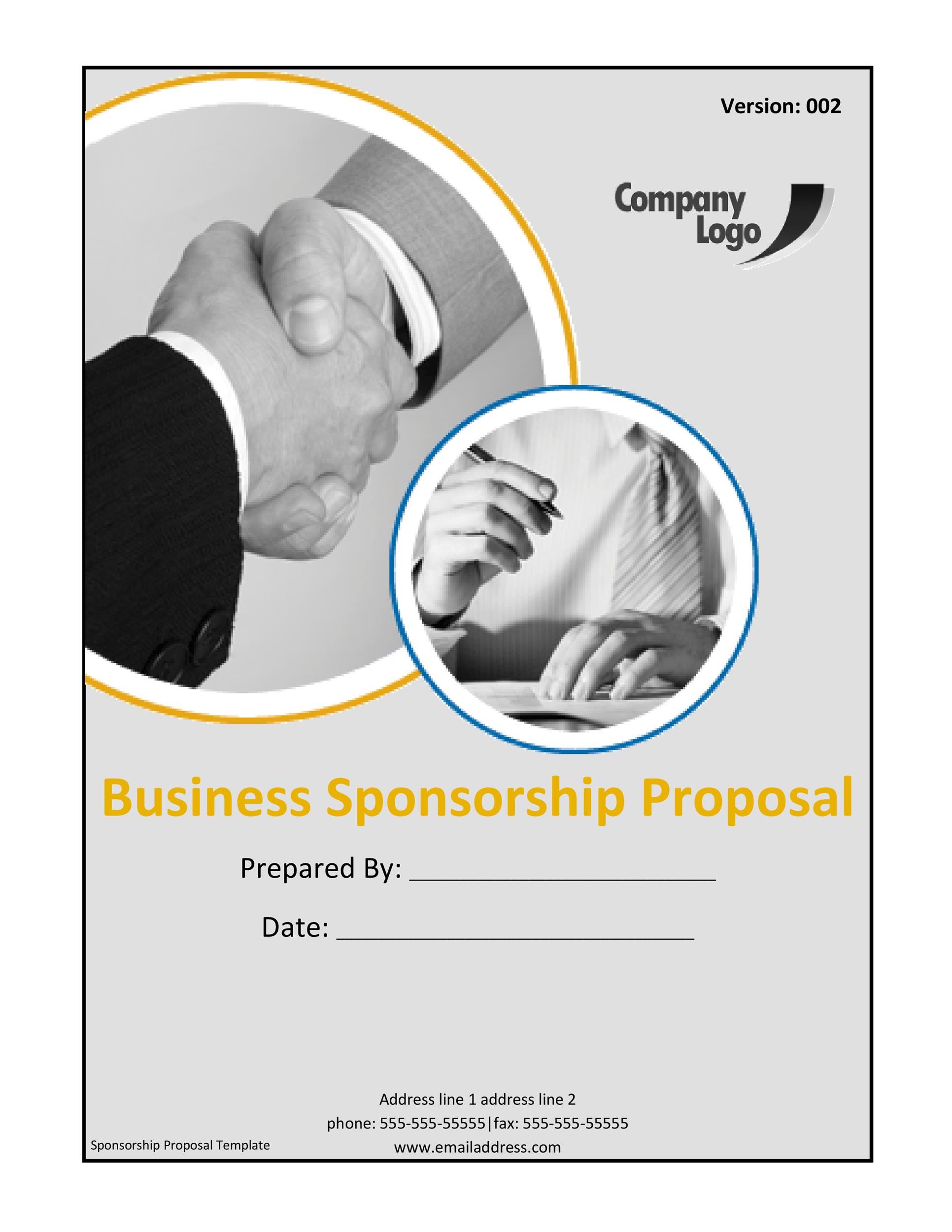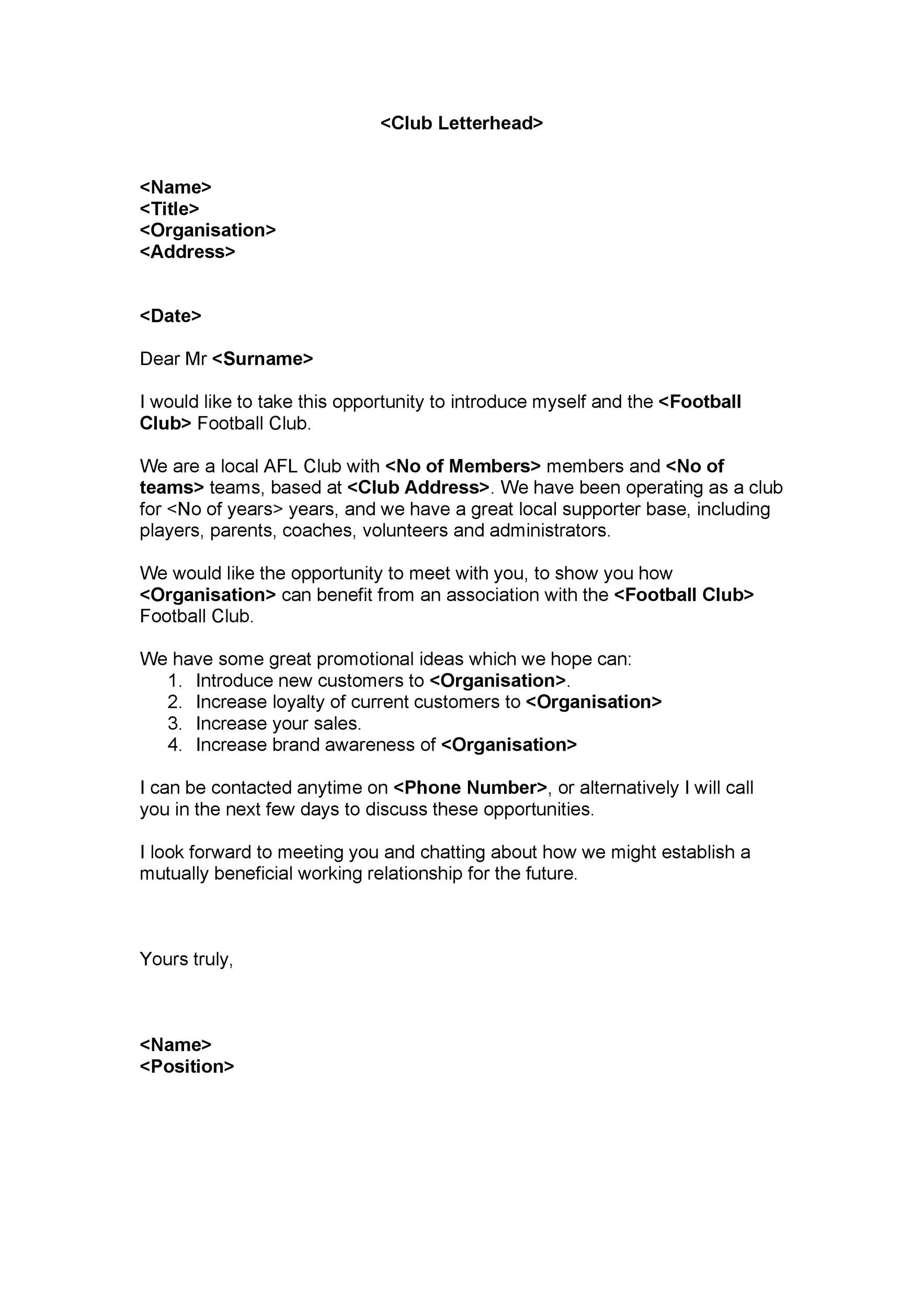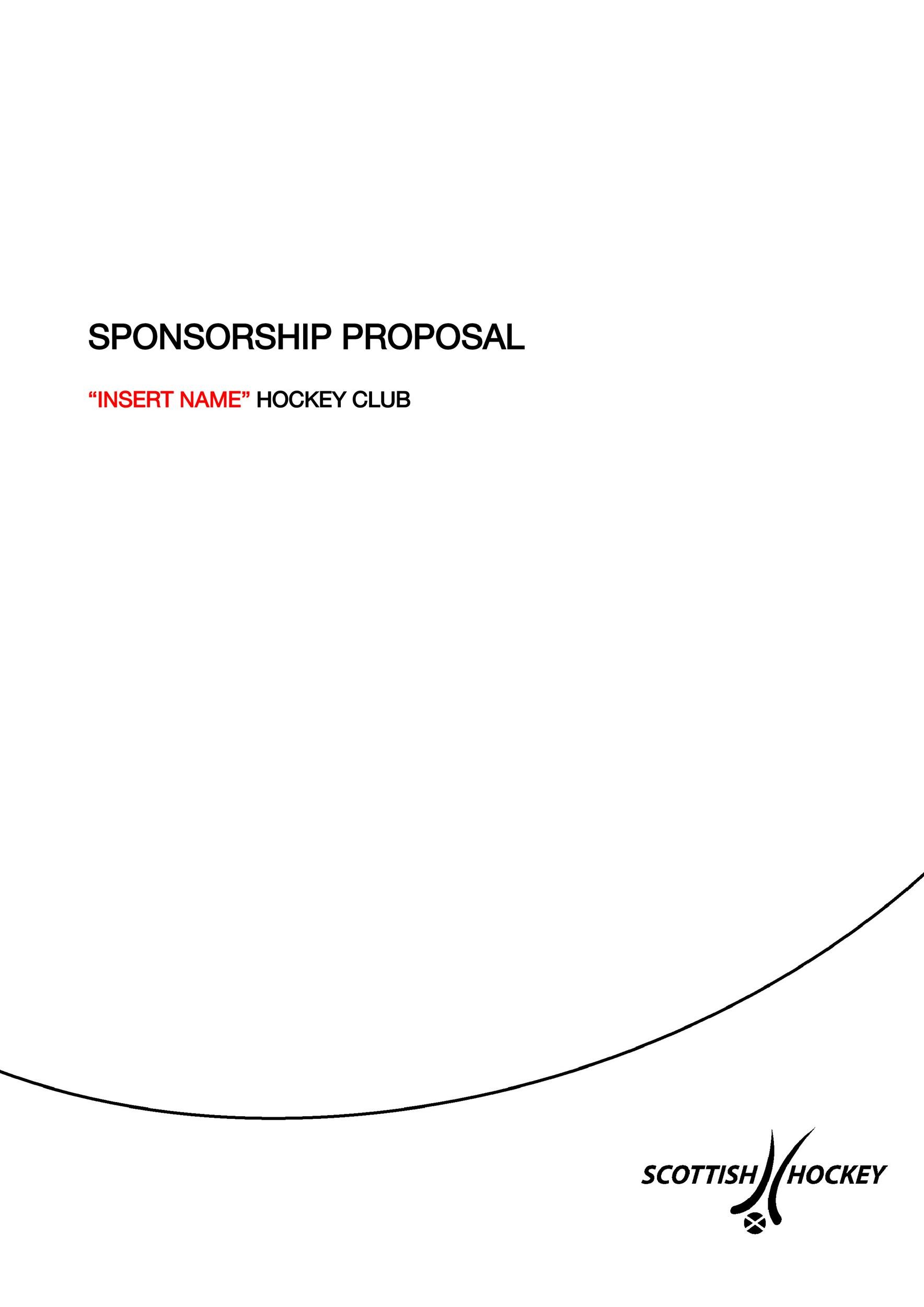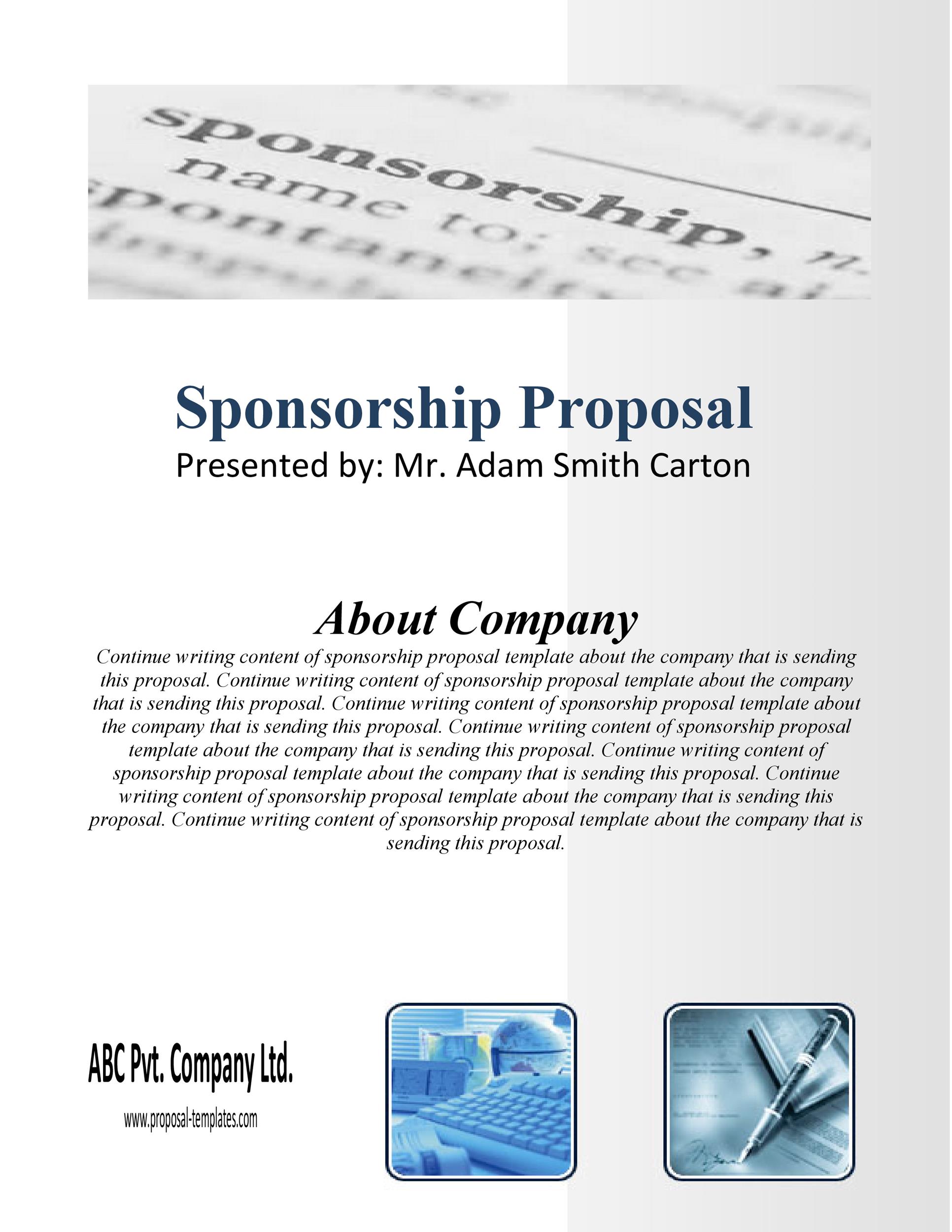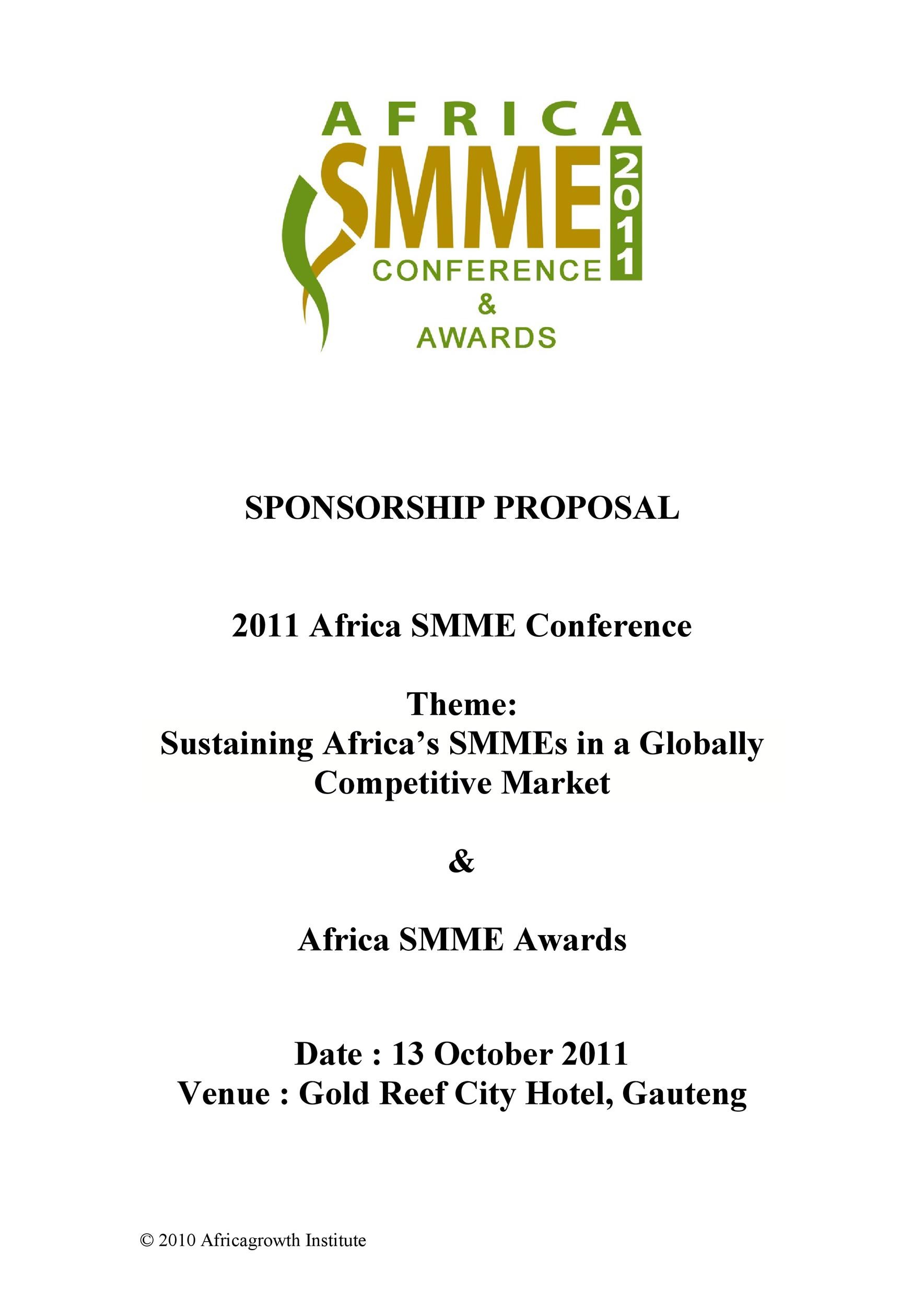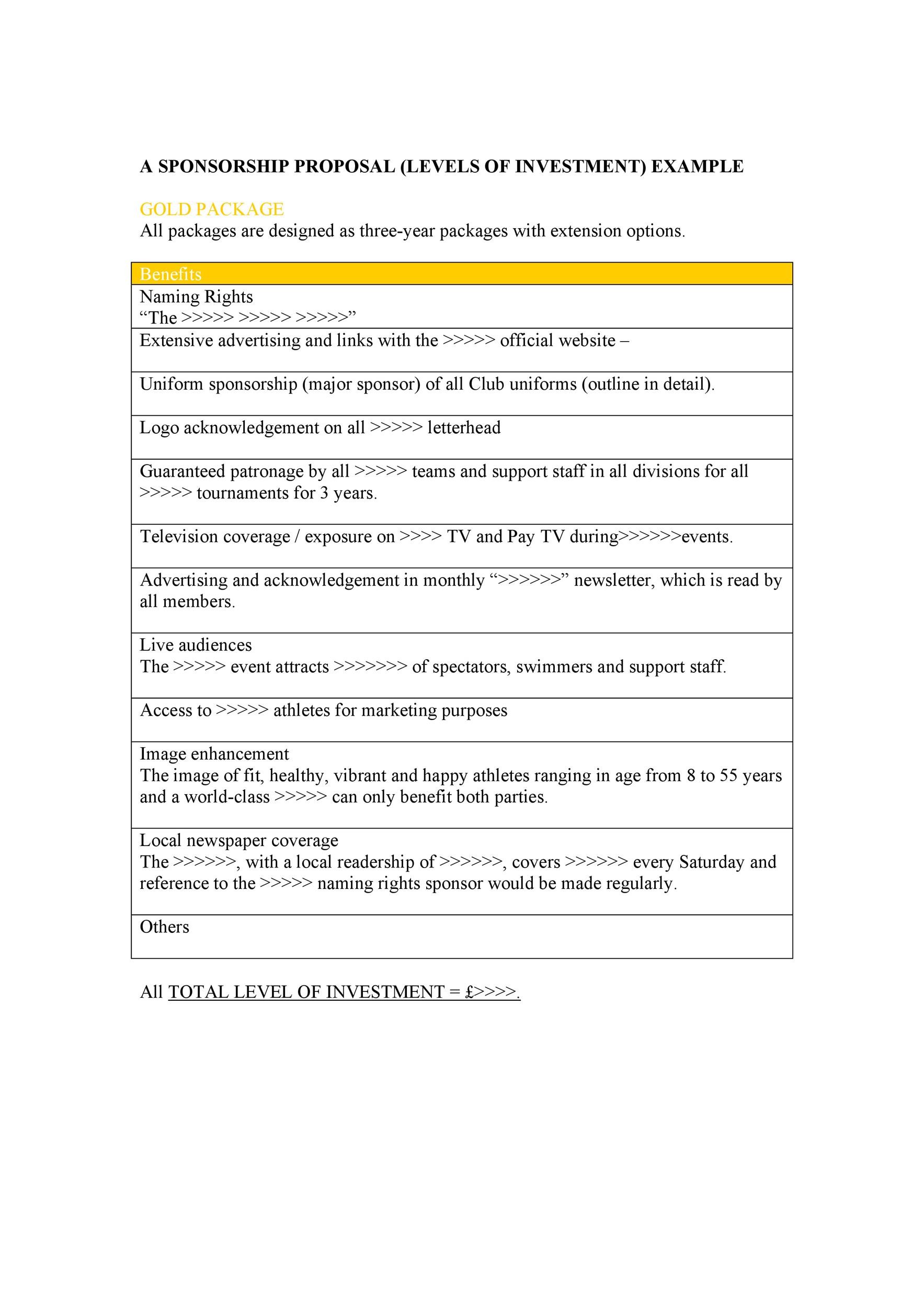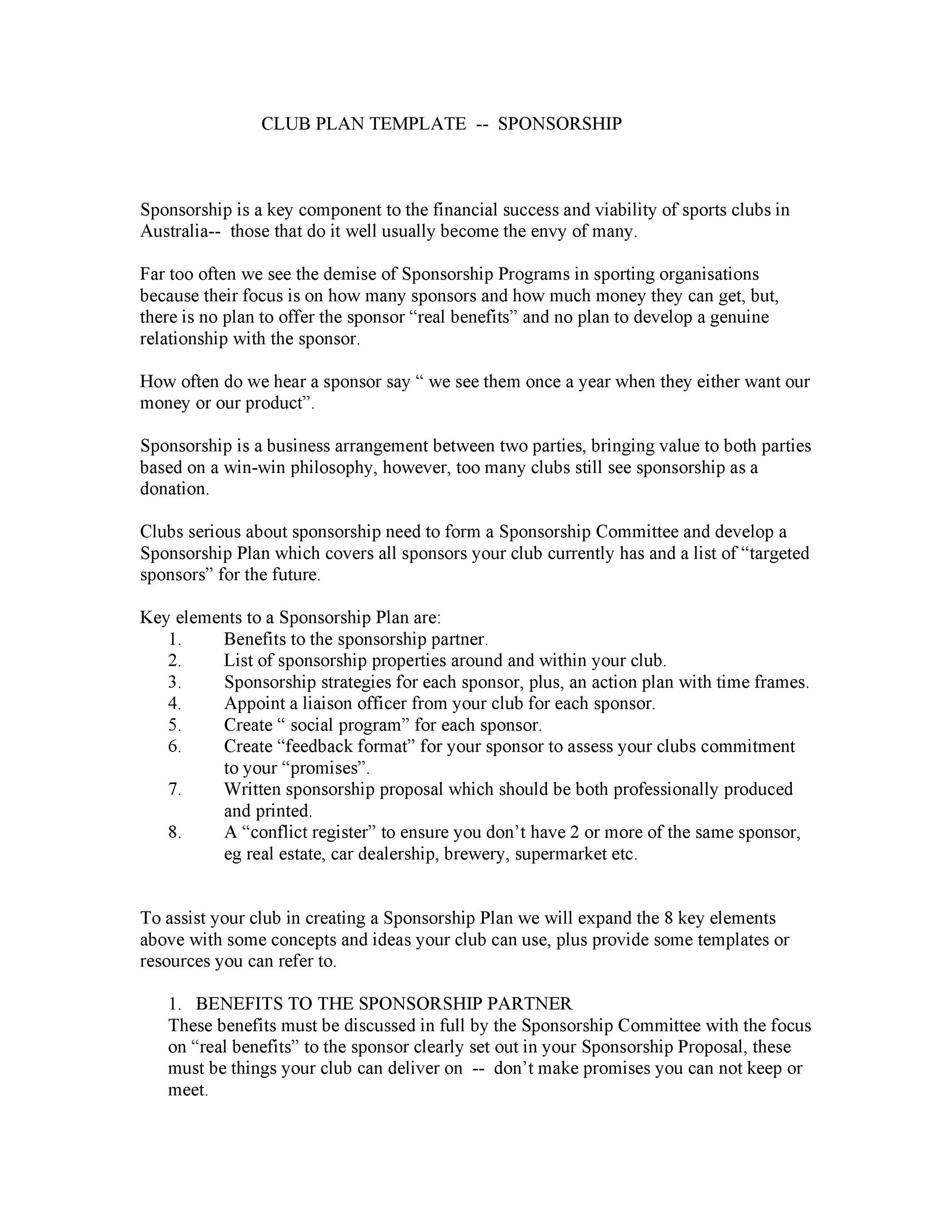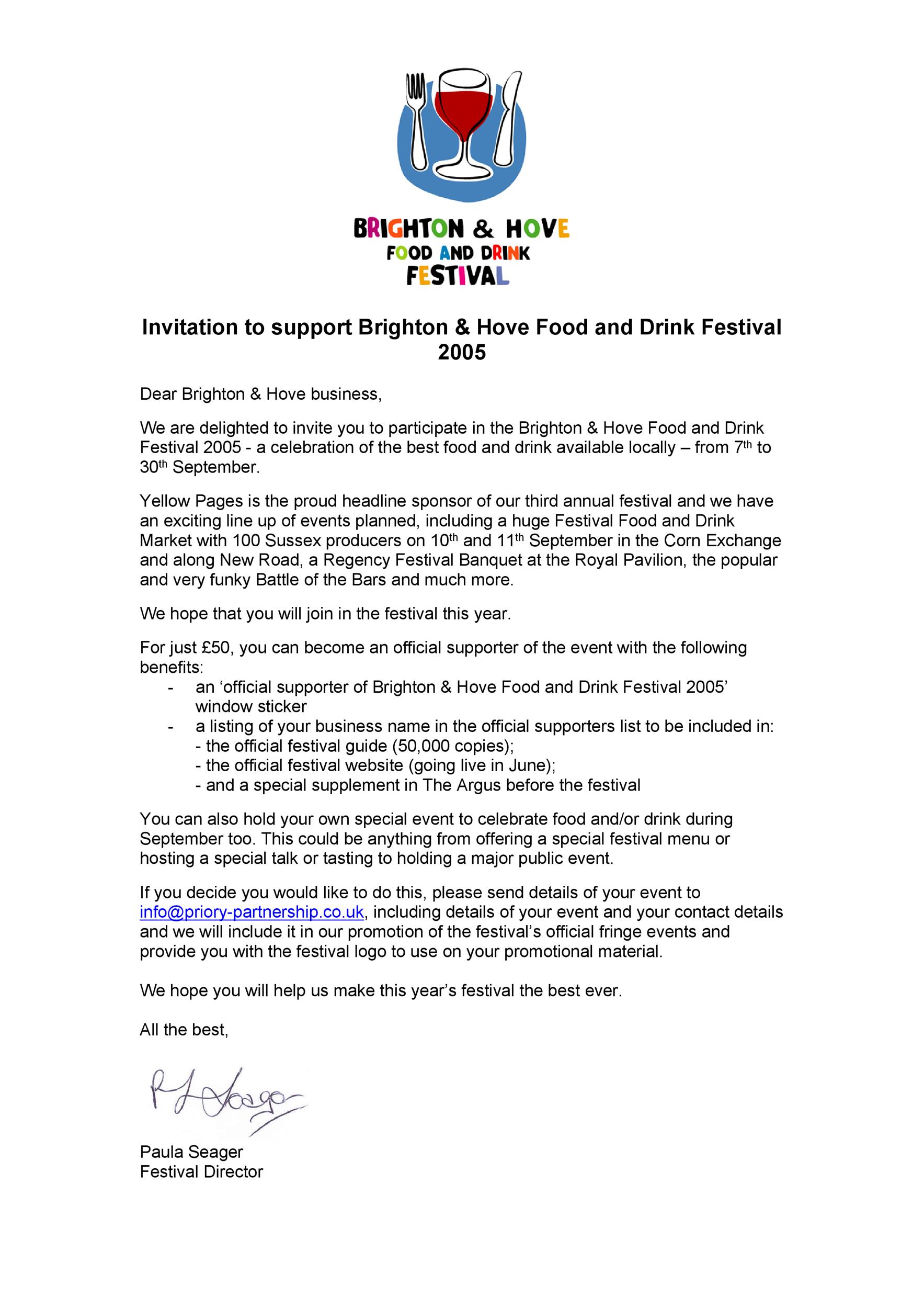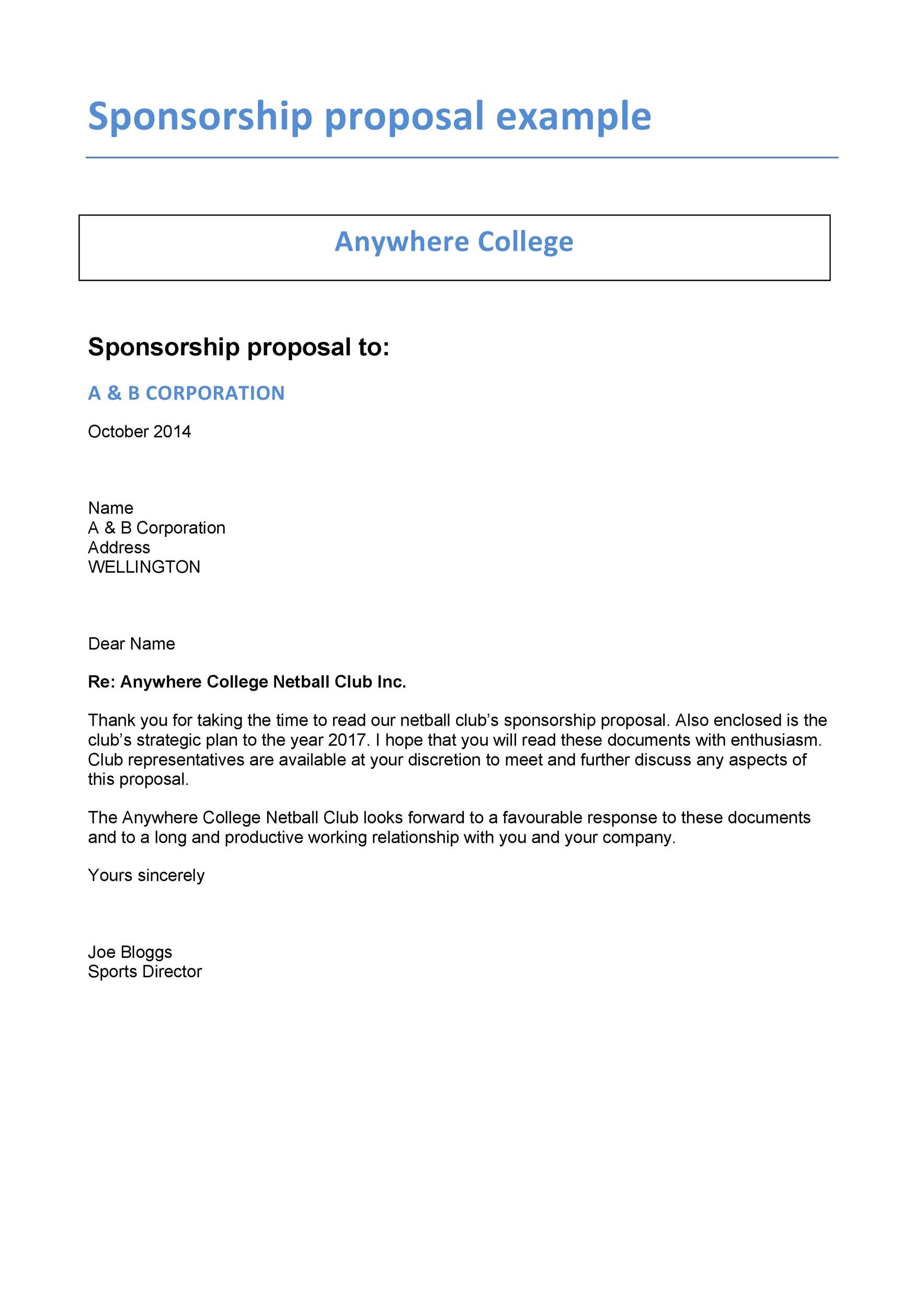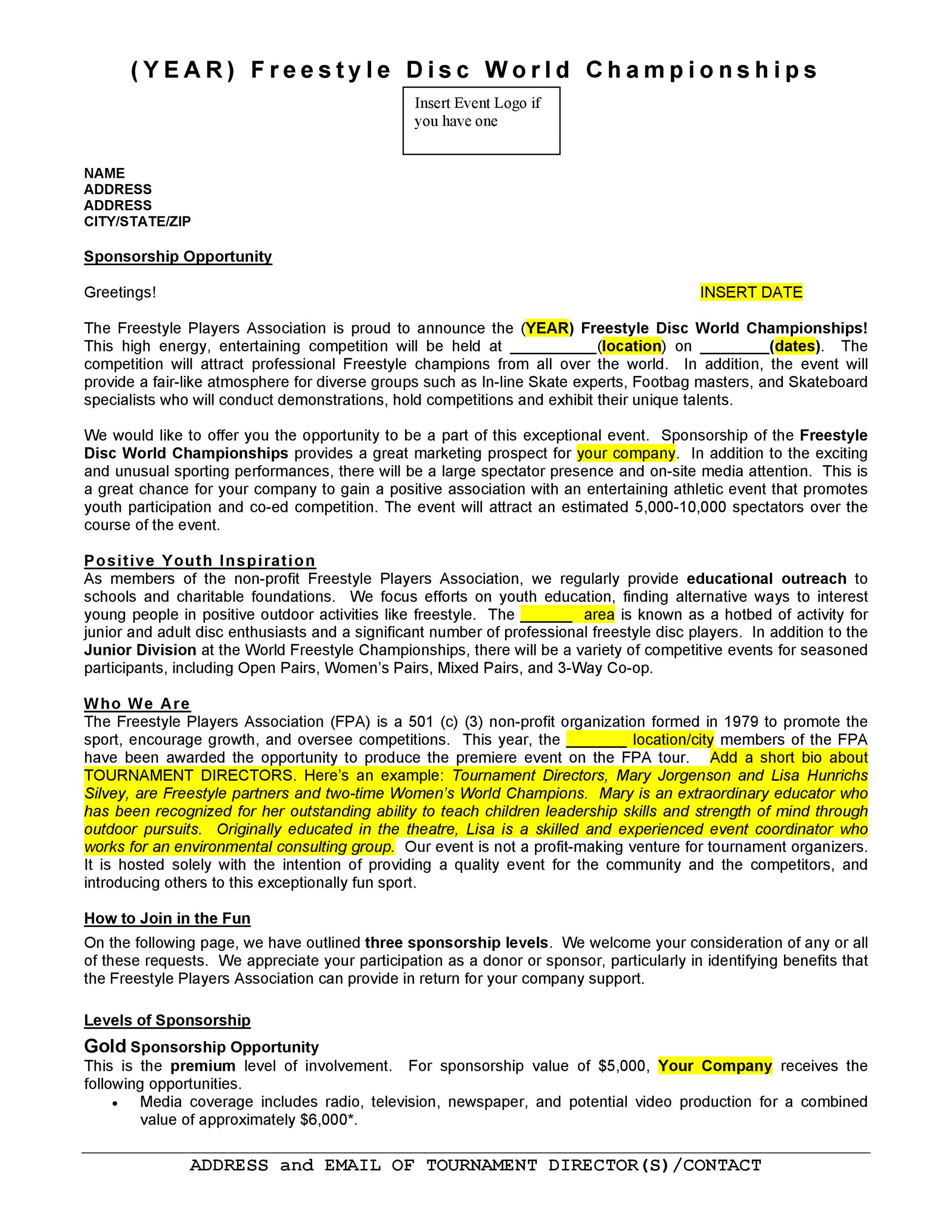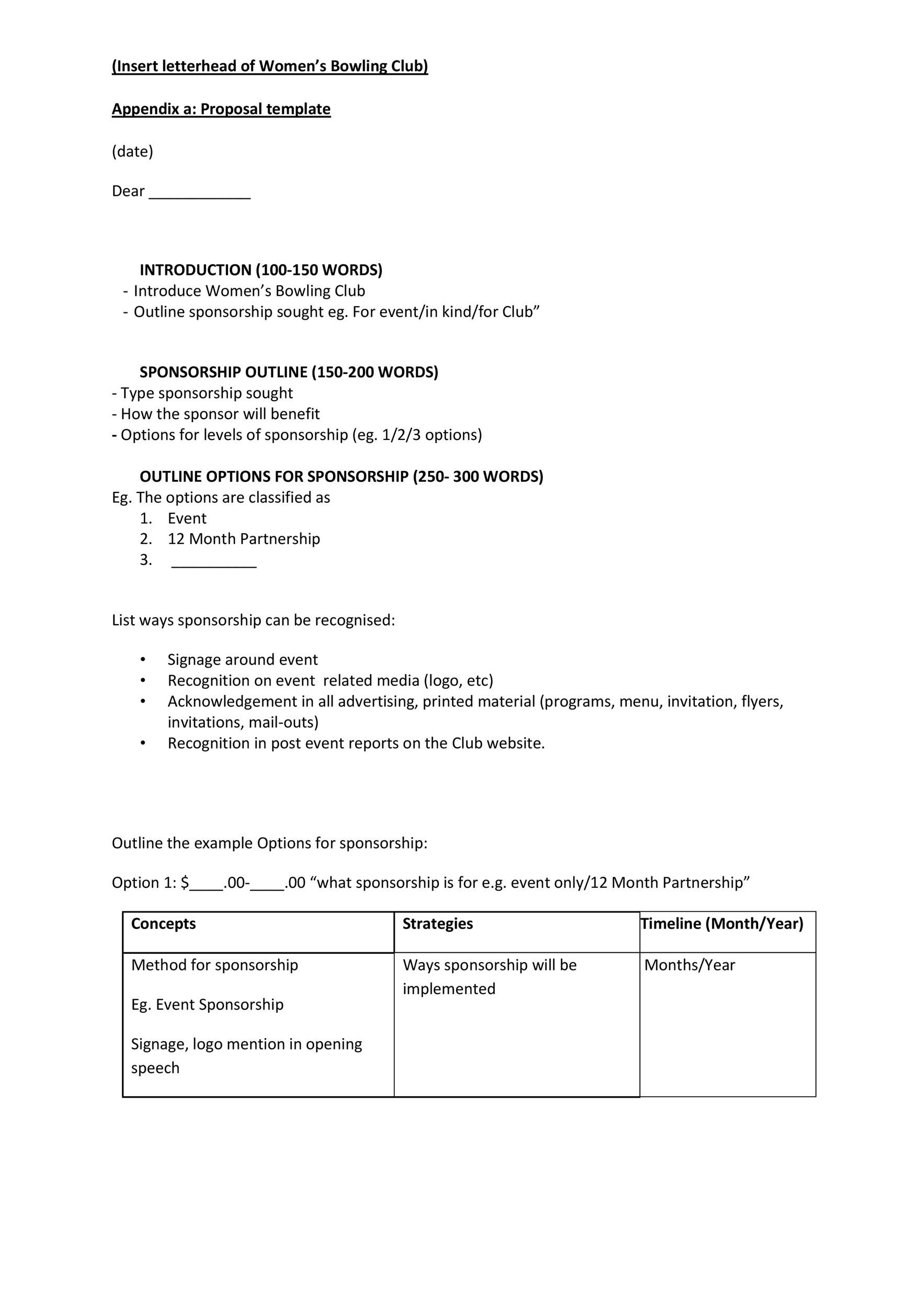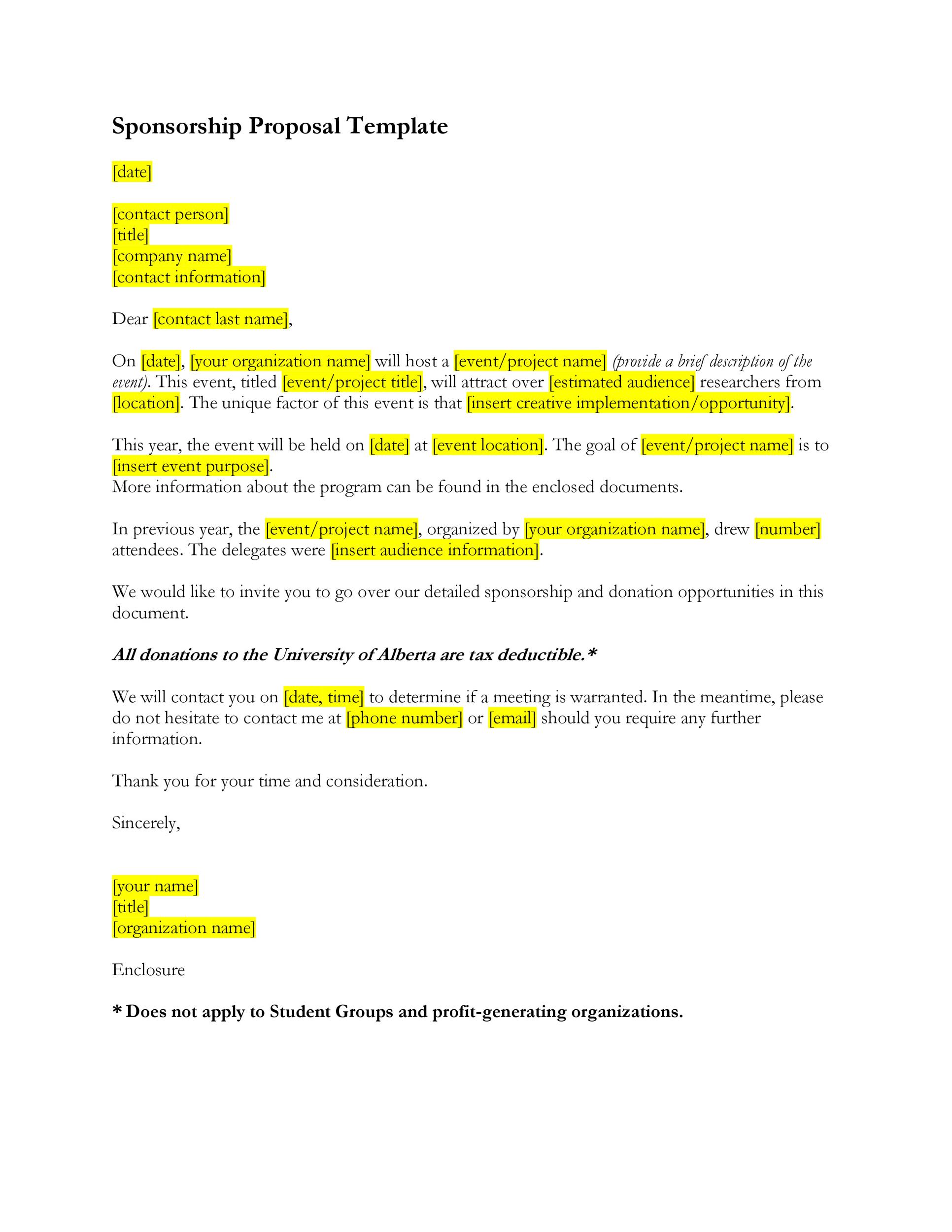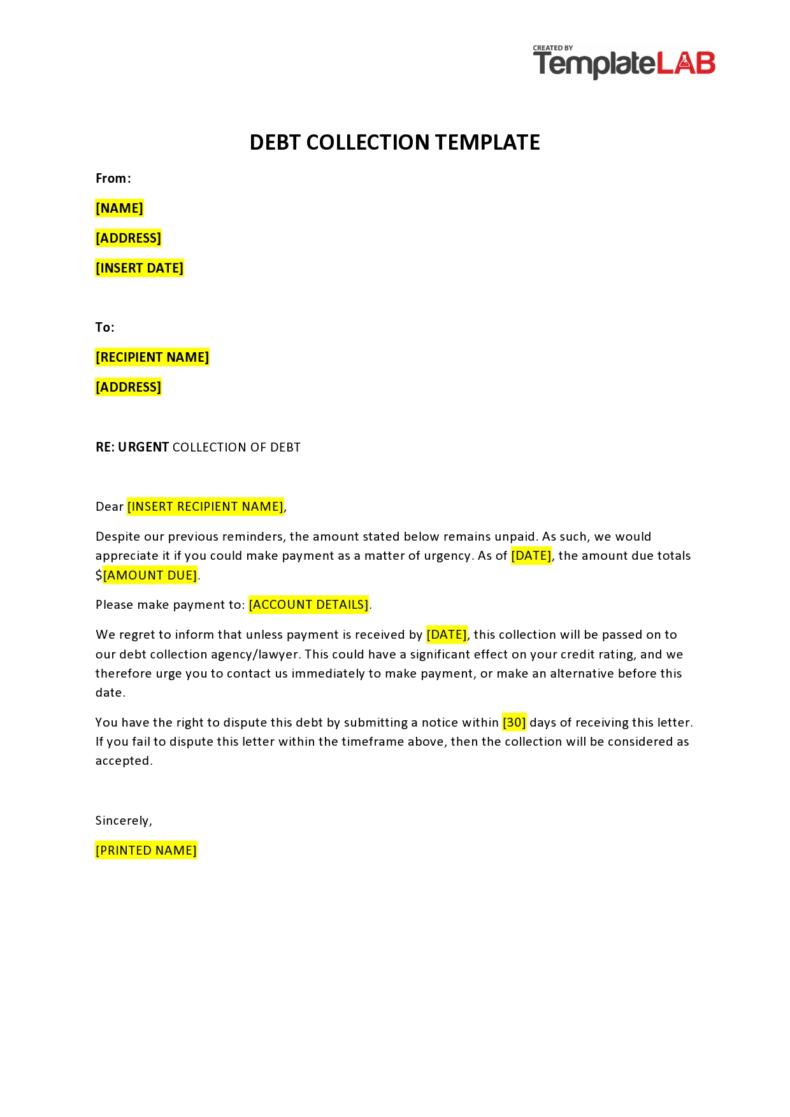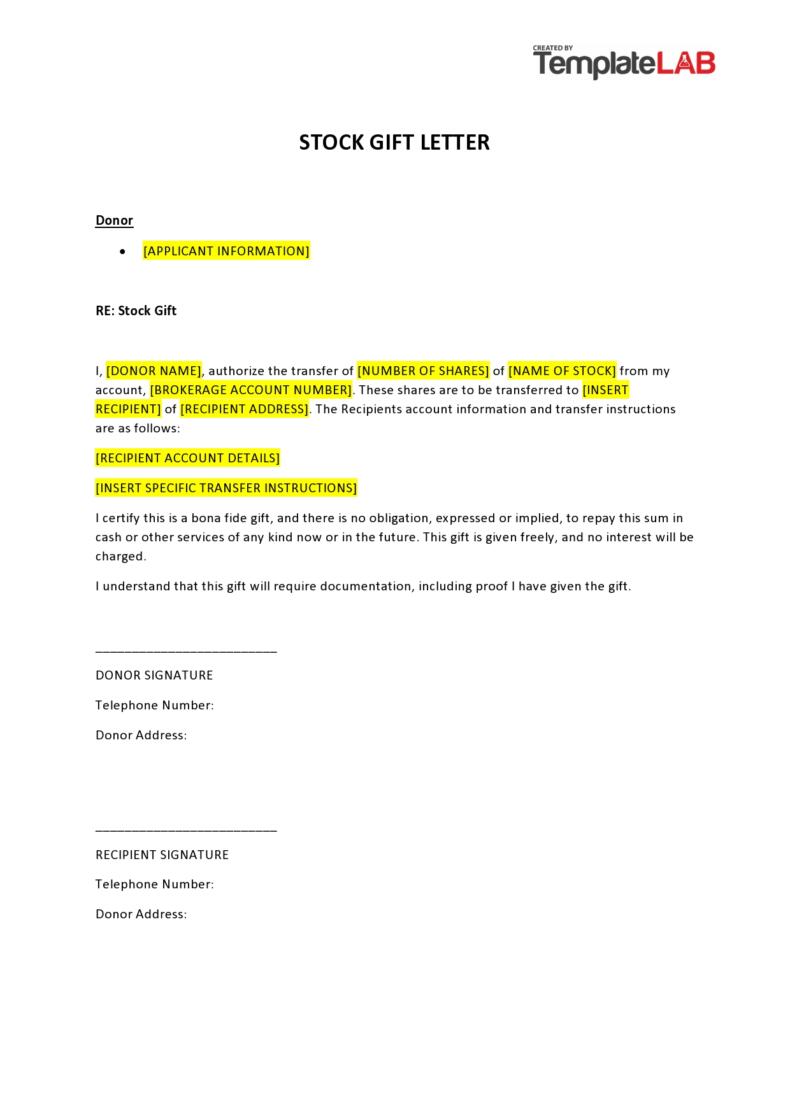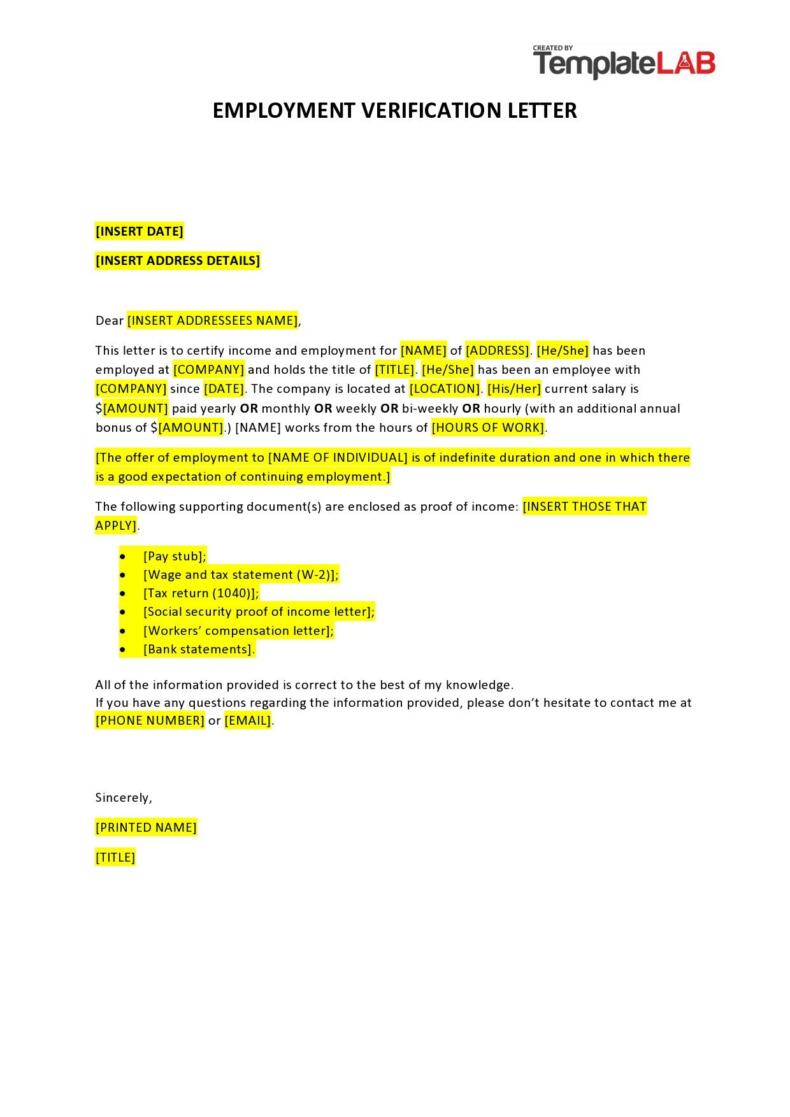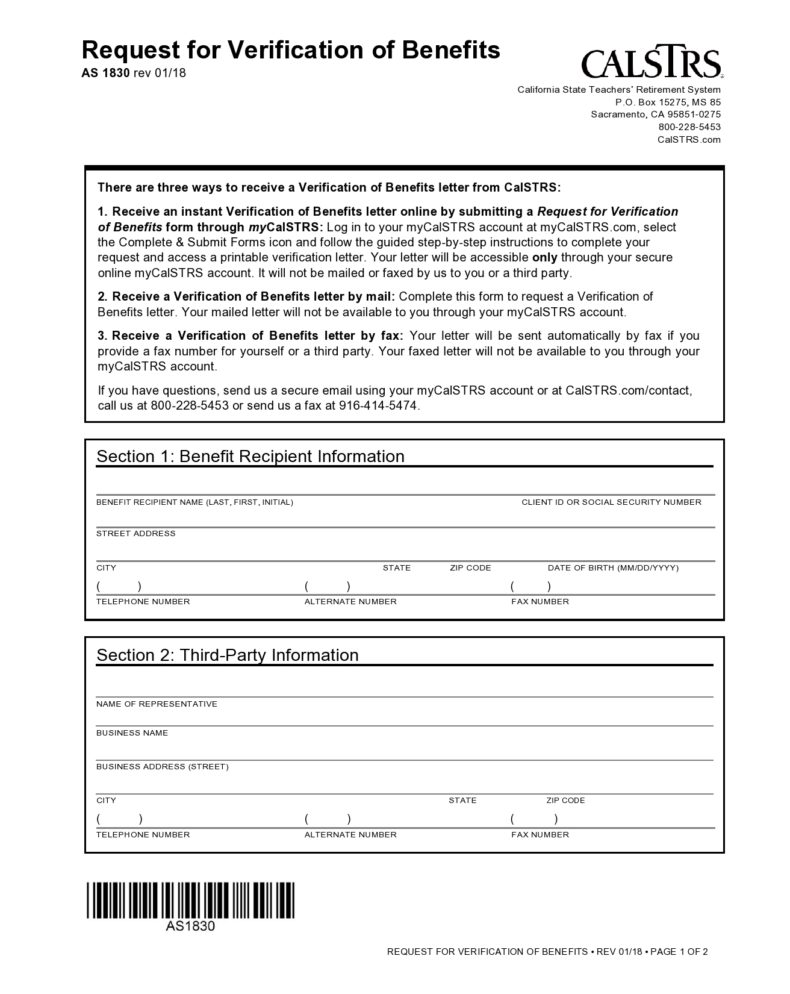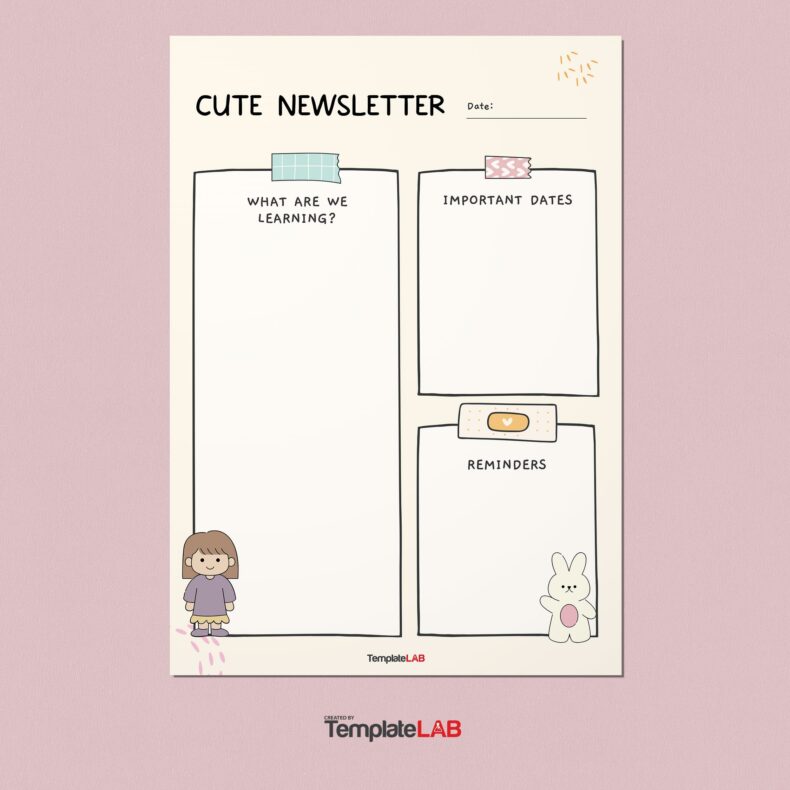If you’re looking for a funding for an event, competition, or tour, then a sponsorship letter or proposal can help you secure the funding you need to make our event a success. Many businesses with a local or national presence enjoy the opportunity to do some social good for the community by sponsoring events. Even if you or your organization are relatively unheard-of, a sponsorship letter can help you secure the funds you need as well as establish credibility for your project or event.
Table of Contents
Sponsorship Letter Templates
How to Write a Sponsorship Letter
Before you set off to write your letter, think about the business or person receiving it. Understanding your audience is critical to your success and understanding what sponsors are looking for are a part of that equation.
Potential sponsors will want to know whom you are reaching when they sponsor you. If you’re looking for sponsorship for your racecar, for example, you’ll need to be able to explain several important details, such as:
- Who will attend the race (demographics such as age, geography, etc.?)
- How many people will be in attendance?
- Will the race be broadcast on television?
- How many people will be watching it if it’s on TV?
- Will there be local media in attendance? Major media? Who do they reach?
- How long will the event last?
The best way of gathering this information is right at you finger tips – you can easily look up this information online or get it through a quick phone call. Most publications and media organizations online will have a media kit that details their readership, viewers, etc. as well as their demographics such as age, race, income.
With this information, you can now be prepared for any questions about your audience for the event, and a detailed breakdown of their demographics and possible media coverage. (It’s even better if you can find information on which media groups or journalists have RSVP’d for the event.)
Now you have the information you need to approach potential sponsors. First, however, you’ll need to choose what companies you want to approach about sponsorship. You may want to use a sponsorship letter template to help you format the letter.
What Business Should You Approach for a Sponsorship Proposal?
When searching for sponsors, you need to choose businesses that want to connect to the potential audience you’re reaching. For example, if you’re hosting a concert that will attract a lot of teenagers, you’ll want to think of food and beverage retailers, as well as lifestyle brands that consider teens their target demographic. If you’re hosting an award ceremony for a local nonprofit, you’ll want to choose companies that focus on giving back to the community, and have sponsored events like yours in the past. If you’re running in a race, but can’t afford to pay your own way, a sponsor can help cover your travel cost with the hopes that you’ll bring them glory with your performance. Usually a sponsor of athletic events will be shoe companies, athletic wear, and other lifestyle brands focused on fitness and health.
Take some time to brainstorm businesses – both local and national – that may be able to help fund or supply services or donate supplies for your event. Think about what you can offer them and what they will hope to gain from their sponsorship of you.
Sponsorship Proposal Templates
Using Sponsorship Letters to Fund Band Tours & Other Cultural Events
Using sponsorships to put fund your band on tour can be very rewarding – because you won’t go broke. Getting your tour, band or event sponsored is critical to your success because it secures funding that you don’t have to pay back. Sponsorship can offset expenses for you. You may wonder if you or your event is important enough to merit sponsorship. Don’t be shy to approach sponsors! They gain benefits from your audience, get more recognition, and you won’t have to beg for donations from individuals for every expense.
Your Sponsorship Letter is an Introduction Letter
The first step in securing sponsorship dollars is to craft a professional introduction letter. This is where you can highlight opportunity you are offering. If you’re hosting a concert, give information on each band’s audience. If you’re running in a race, explain your value, goals, and background. If nothing else, you can offer your sponsors a chance to help you inspire others.
If you have trouble getting started, gather some of the information about the event such as brochures, press releases, biographies of participants and go from there. You should be able to sum up features and benefits of participating in the event by going through the features and benefits of sponsorship. Features will include the event participants, different activities, and other aspects of the event. For example, if you’re at a race with multiple laps, a sponsor will get the feature of an ad that will be shown multiple times on television. Benefits are meatier; you may want use numbers to help your reader understand how many people that an ad will be reaching, as well as the potential audience from media coverage
How to Write a Sponsorship Proposal
Most sponsorship deals are basically marketing deals where one party offers material support to a sponsor who, in turn, gets a certain amount of advertising and publicity. The best way to find sponsorship arrangement is to write a business proposal explaining why your event will benefit potential sponsors.
You should use a sponsorship proposal template to help you format your proposal correctly. We have included one on this page for your reference. A proposal letter should be attached to a proposal for sponsors to respond to.
Your proposal itself should have a cover page with a table of contents.
New to proposal writing? Don’t worry about. A sponsorship business proposal is not a difficult thing to write. It’s simply a document that you use introduce yourself, describe your market, outline your needs, and show sponsors how they benefit from supporting your event.
- Step 1: Do Your Research. When approaching potential sponsors, you should show that you understand them, their brand, and how their sponsorship can benefit their business. You must craft each proposal for each sponsor – don’t use a cookie-cutter template alone. Your proposal must show depth and that you took the time to understand each sponsor.
- Step 2: Write a two to three paragraph of your opportunity. This will re-iterate facts about the event benefits, and features.
- Step 3: Give a detailed overview of the audience, markets and overall media reach of the event. Let them know what kind of public relations support will be included in their sponsorship. Will you mention them in a press release? Give them access to the media directly?
- Step 4: Name deliverables. What specifics can you guarantee each sponsor will get? Their name on 1500 t-shirts?
- Step 5: Name how much money / goods/ services you are looking for from the sponsor.
- Step 6: Assert your credentials and expertise. End your proposal describing past projects that were a success, explain the event’s history, values, and the capabilities of the people participating.
- Step 7: Give them a reply-by deadline. This will help you weed out the companies who are not interested in your proposal.
Once you feel your proposal is complete, make sure you carefully proofread and spellcheck it. Read it out loud to listen for any awkward parts and get a colleague or friend to read it and proofread it for you. A polished final draft that’s persuasive is worth the extra effort, and may be the difference between sinking and swimming when it comes to your proposal.
Tips for Event Sponsorship Proposal
No matter what you’re seeking sponsorship for, the basic setup of the proposal will be the same. Many proposal writers make a mistake of talking too much about themselves and their own organizations or participants, rather than focusing on how their event can benefit the sponsor.
A sponsorship proposal is a document intended to persuade another party to give you their money or material support. To be successful, you must gain the trust of the decision makers and make them understand how you will help them expand their brand image and reach new audiences. Don’t be afraid to be creative with different aspects of your event and the potential to include sponsors in different aspects.
Think about the act of marketing and how you can make your even more marketing-friendly. Will you be doing giveaways? Raffles for prizes? Maybe you can add your sponsor’s coupon to a promotional bag? Maybe you can offer to help them build their list by hosting a giveaway of their product during your event, allowing them to keep the filled-out entry forms. If a sponsor doesn’t want to provide monetary support, they may be willing to donate time, skills, or goods to the cause to help support your event.
Companies rarely give sponsorship support or funding without expectations of something in return, so it’s important to make it worth their while, and the best way to do this is to incorporate ways to make not only the event memorable to your attendees, but your sponsors as well.
When you’ve sent out sponsorship proposals, it’s now time to wait. You should have given your potential sponsors a reply-by date, and interested parties will usually respond. It’s okay to call companies a few days before the deadline as a reminder – but don’t turn into a telemarketer, making multiple follow-up parties. You may have to go to their competitors for sponsorship help if they’re not interested. That’s fine. Just make sure you give yourself a lot of time between the proposal and the actual event, and that you craft all of your materials professionally.

